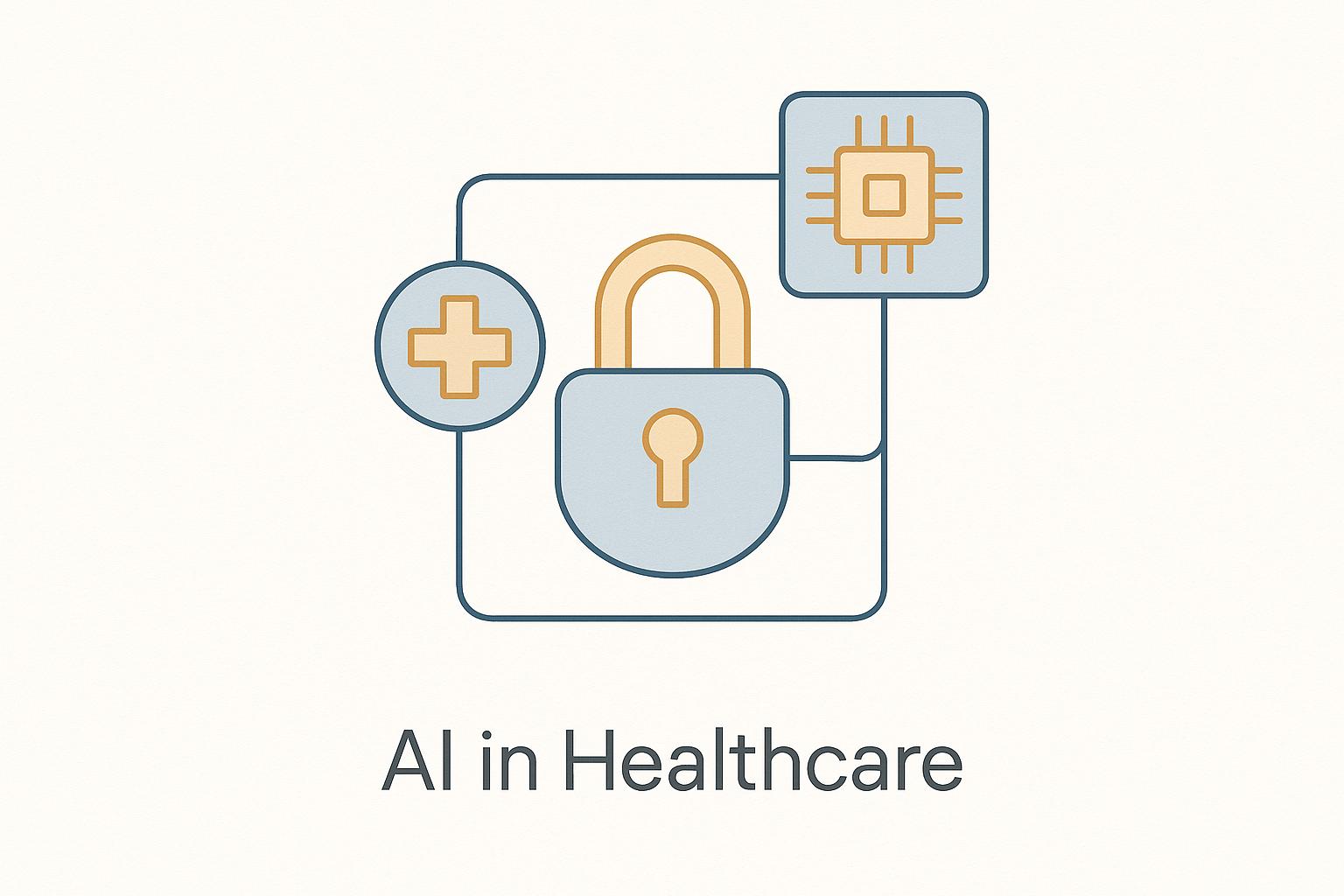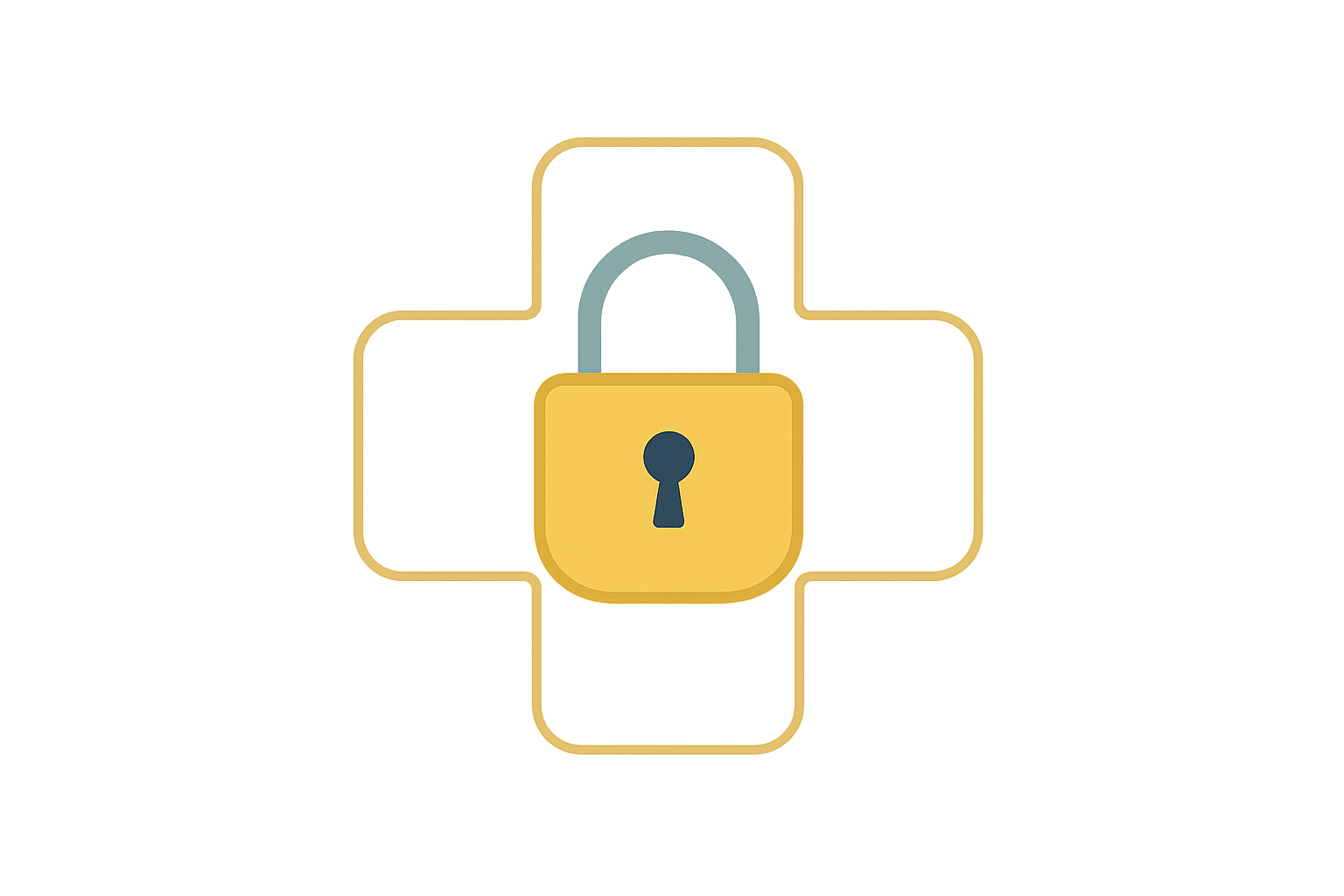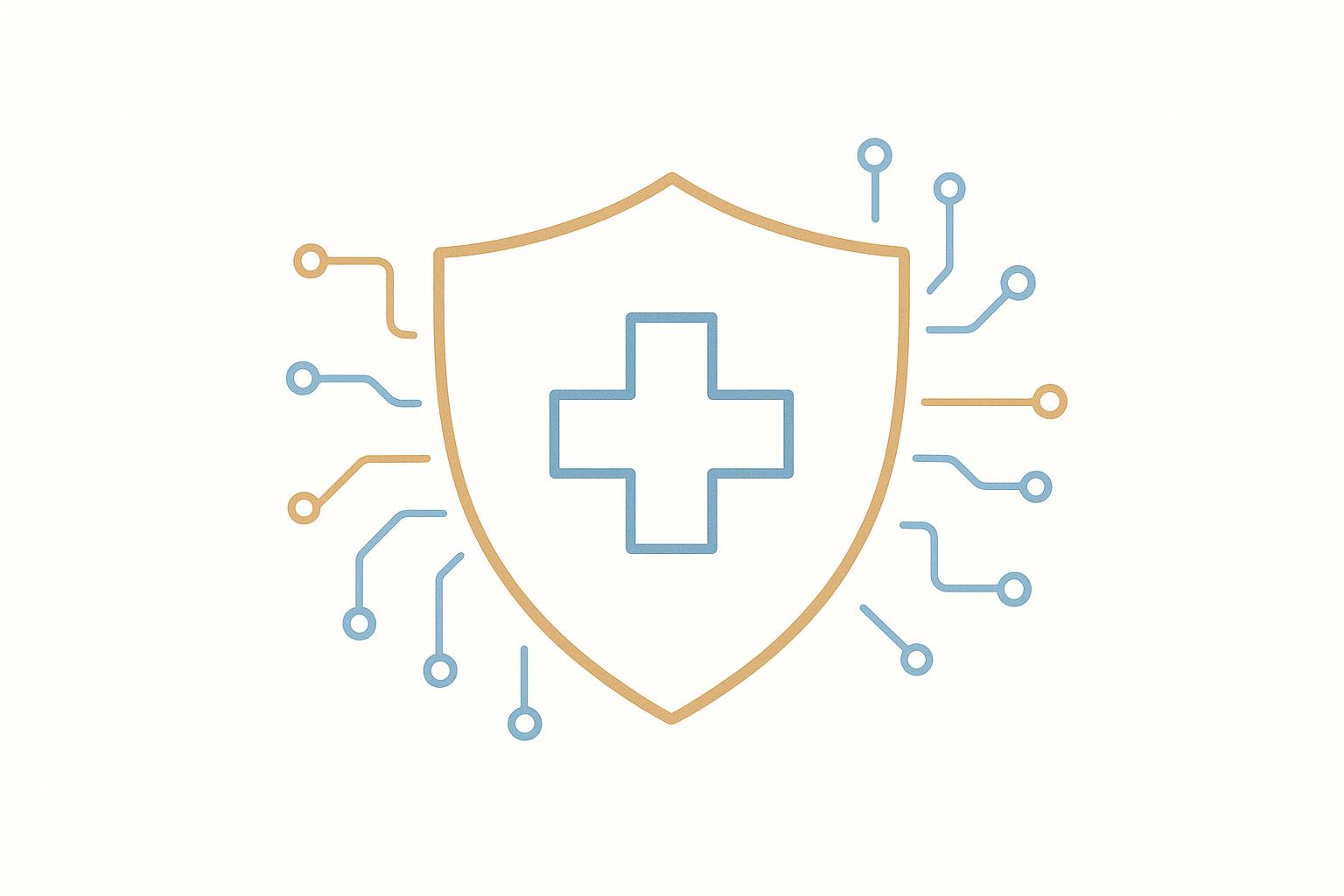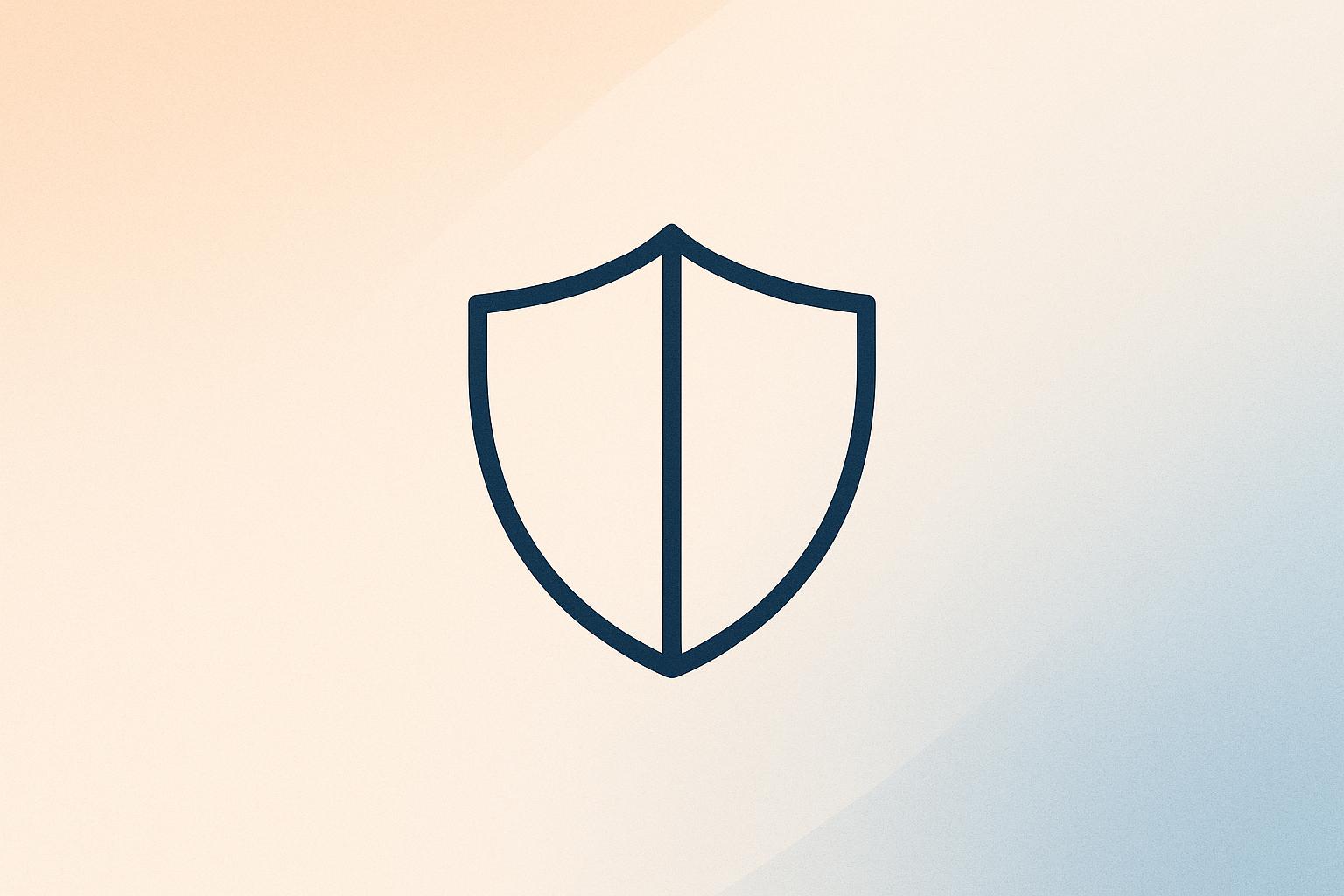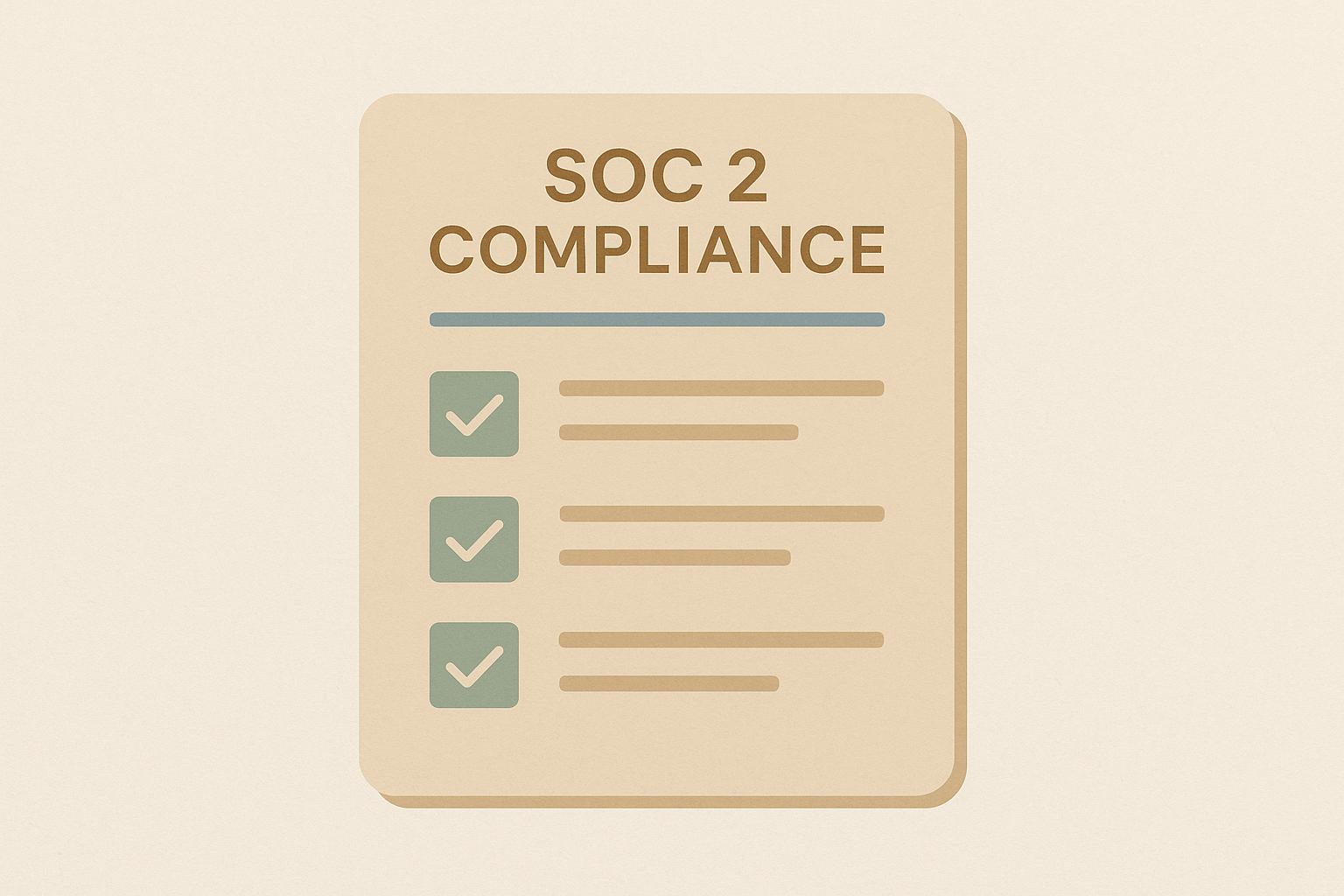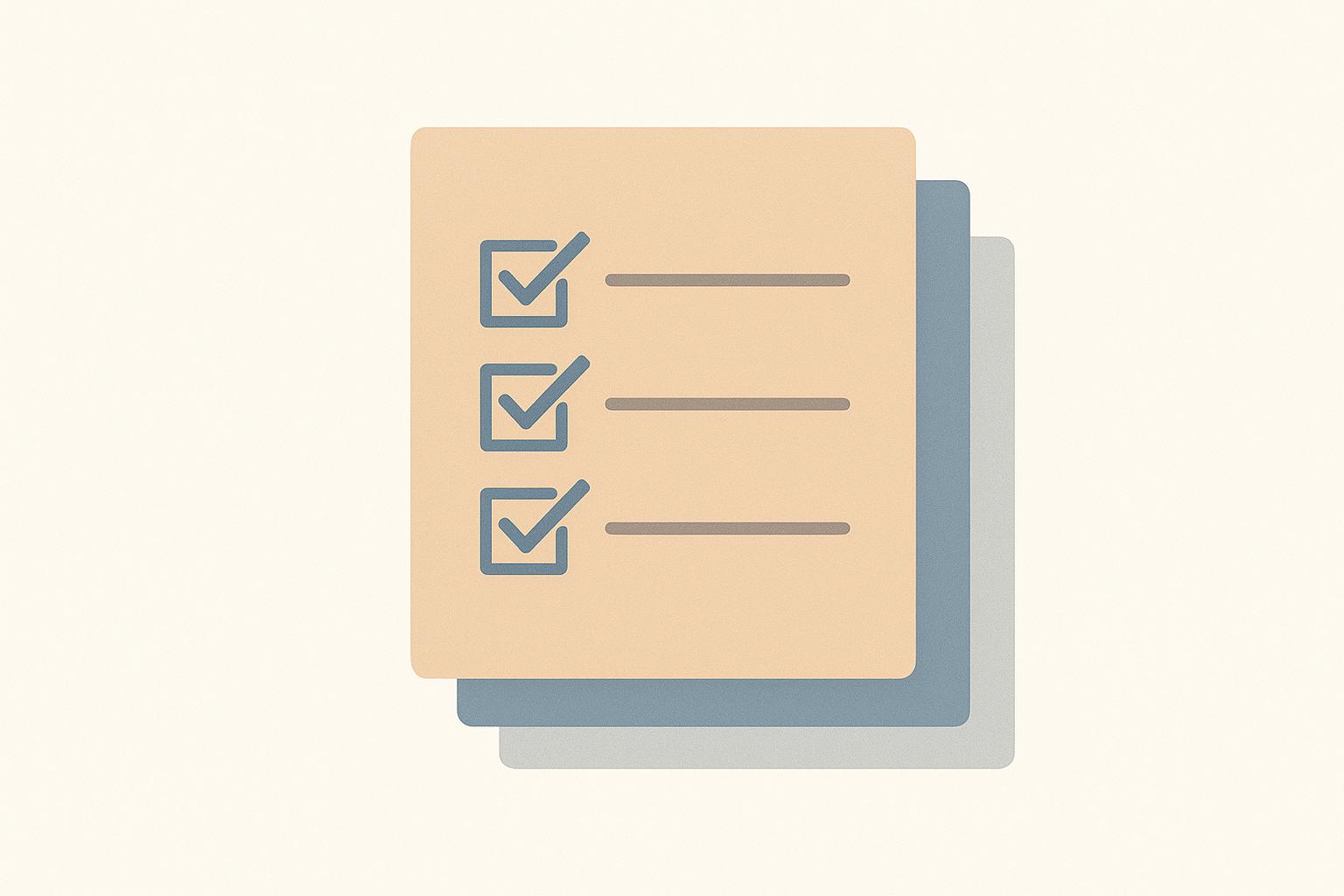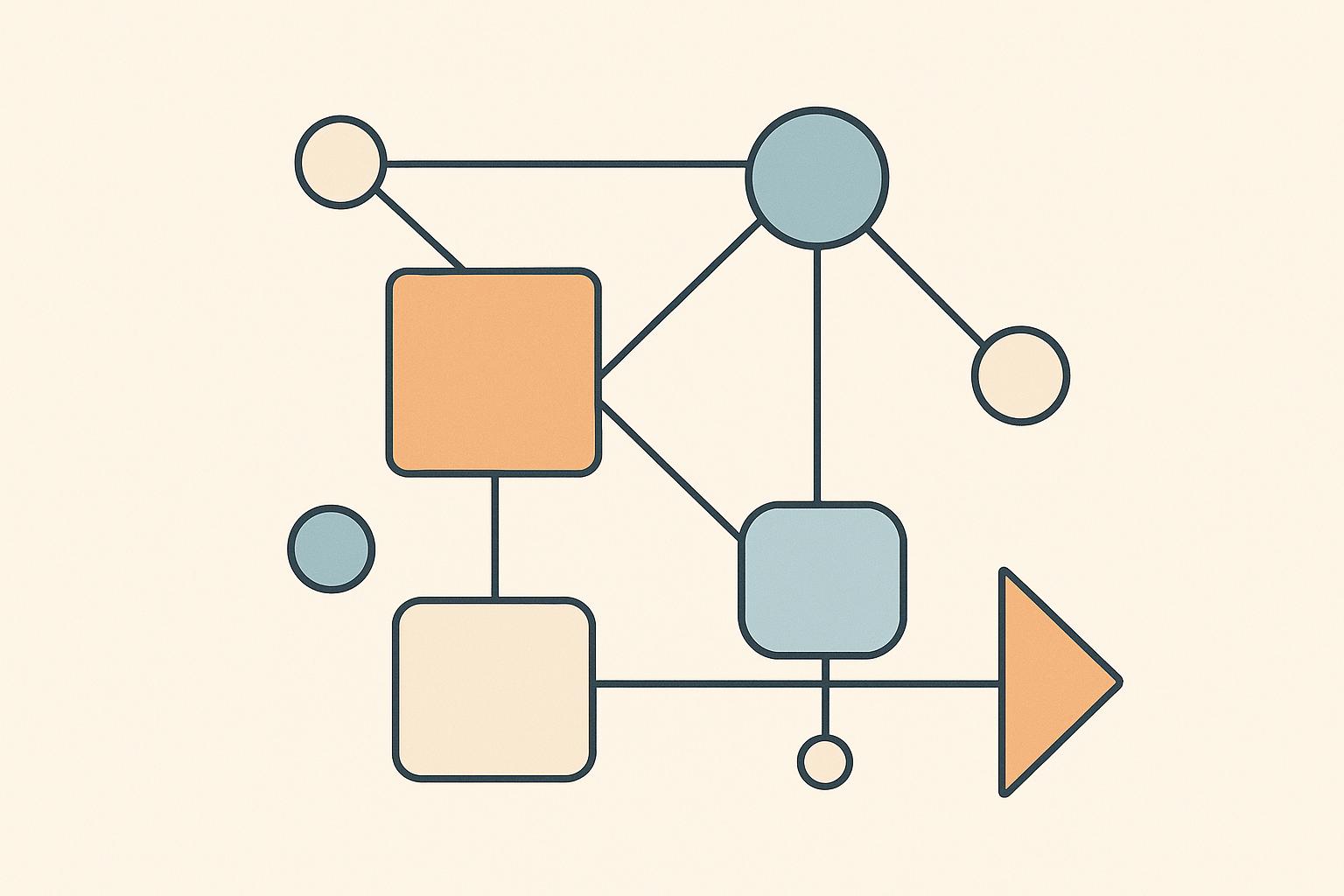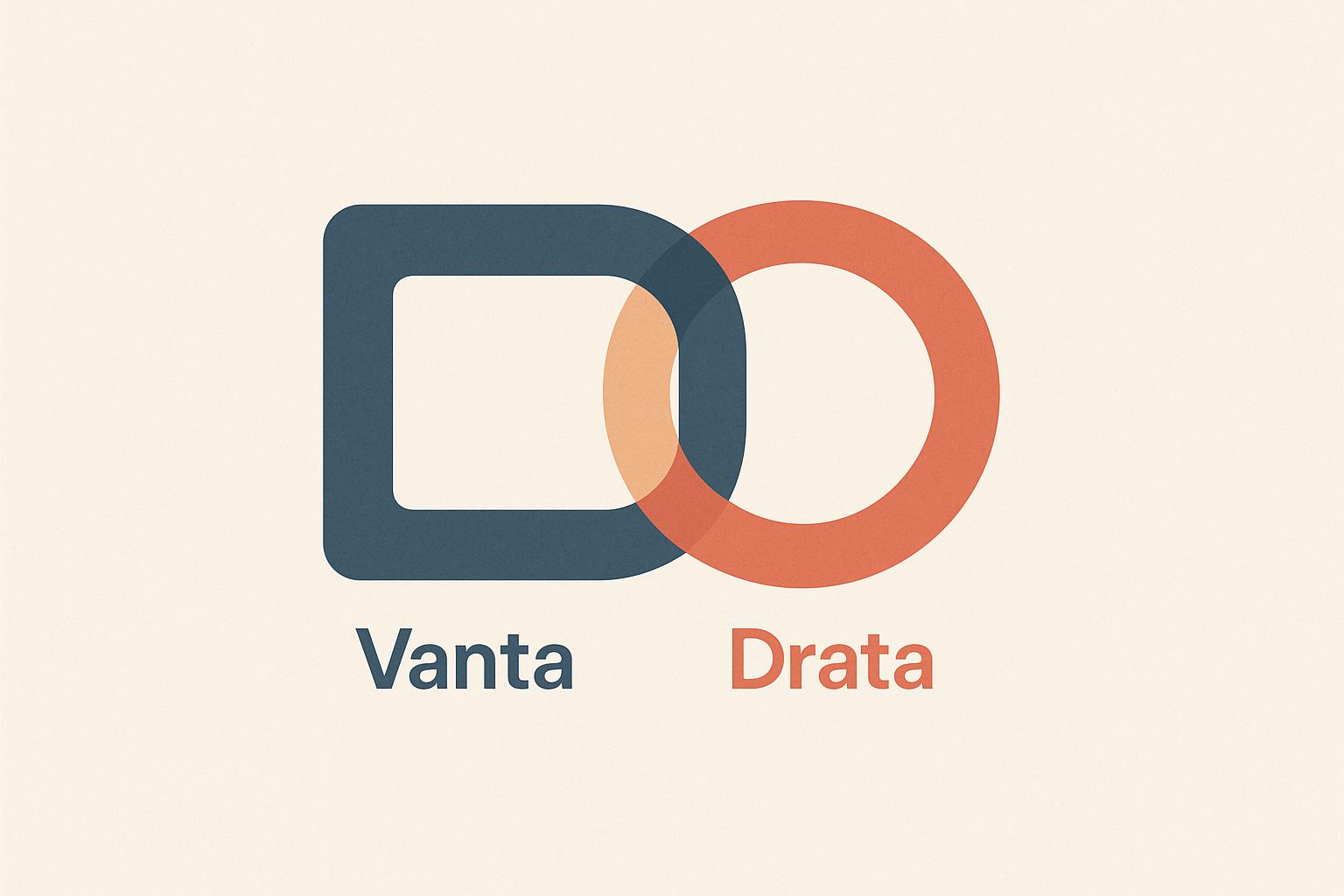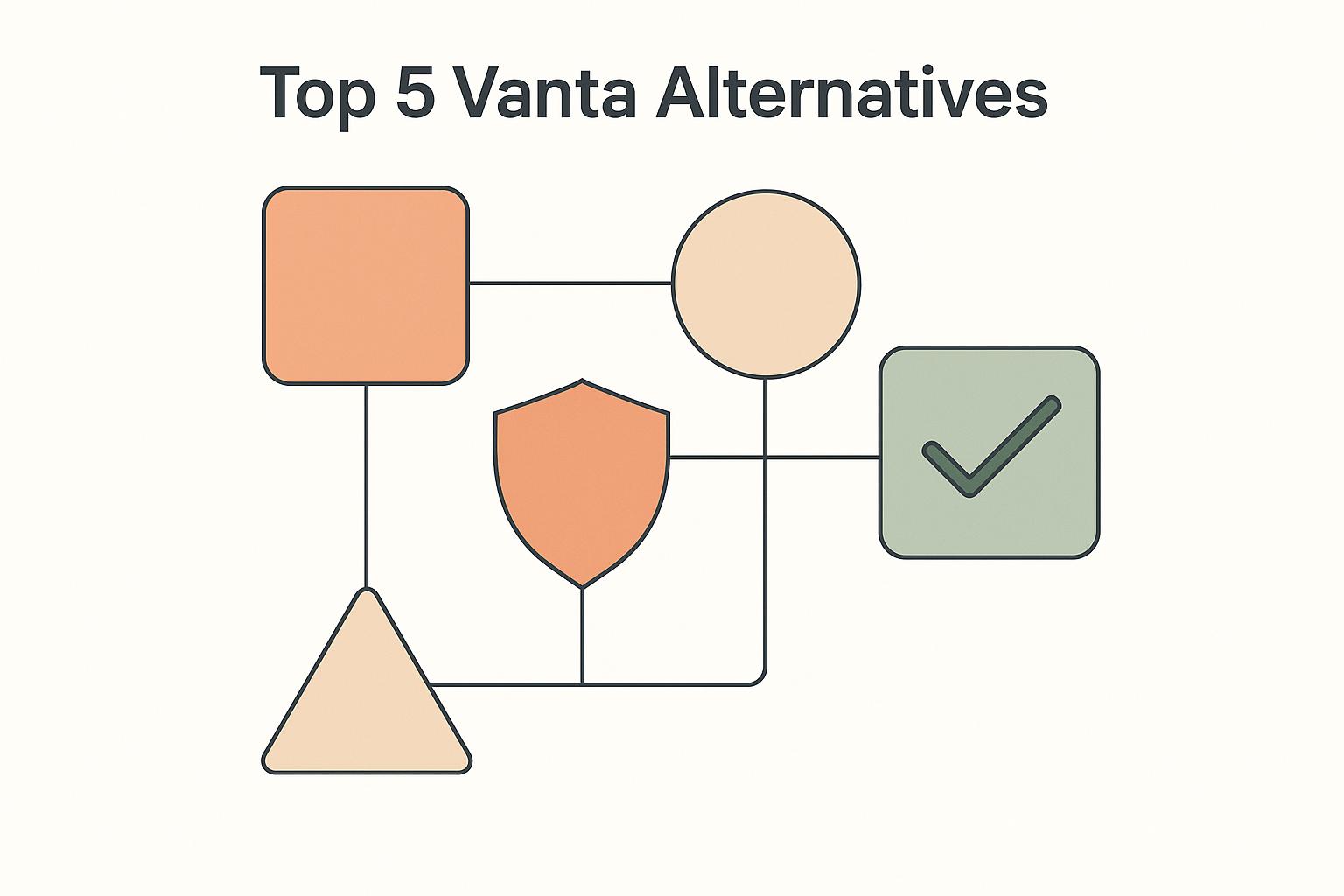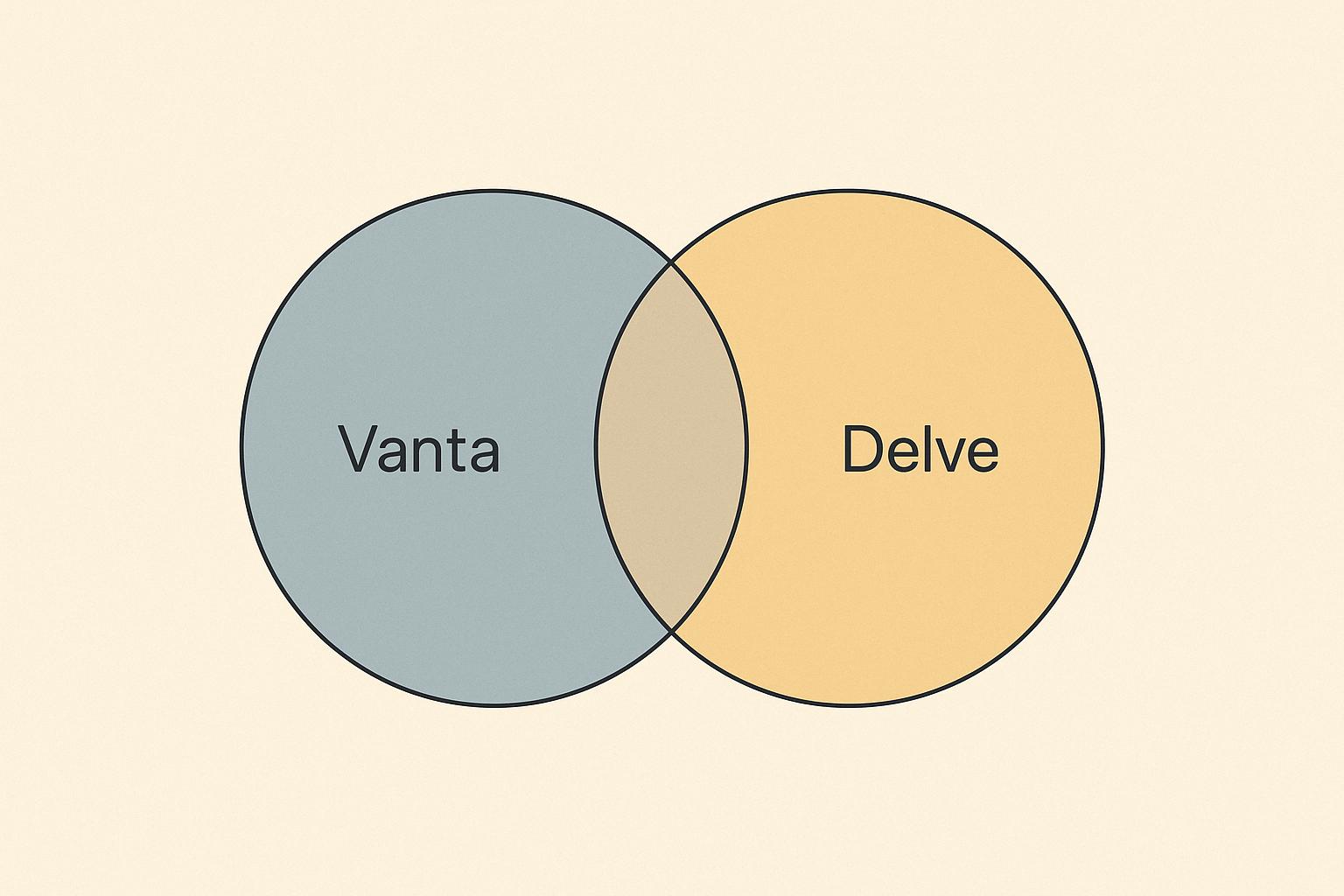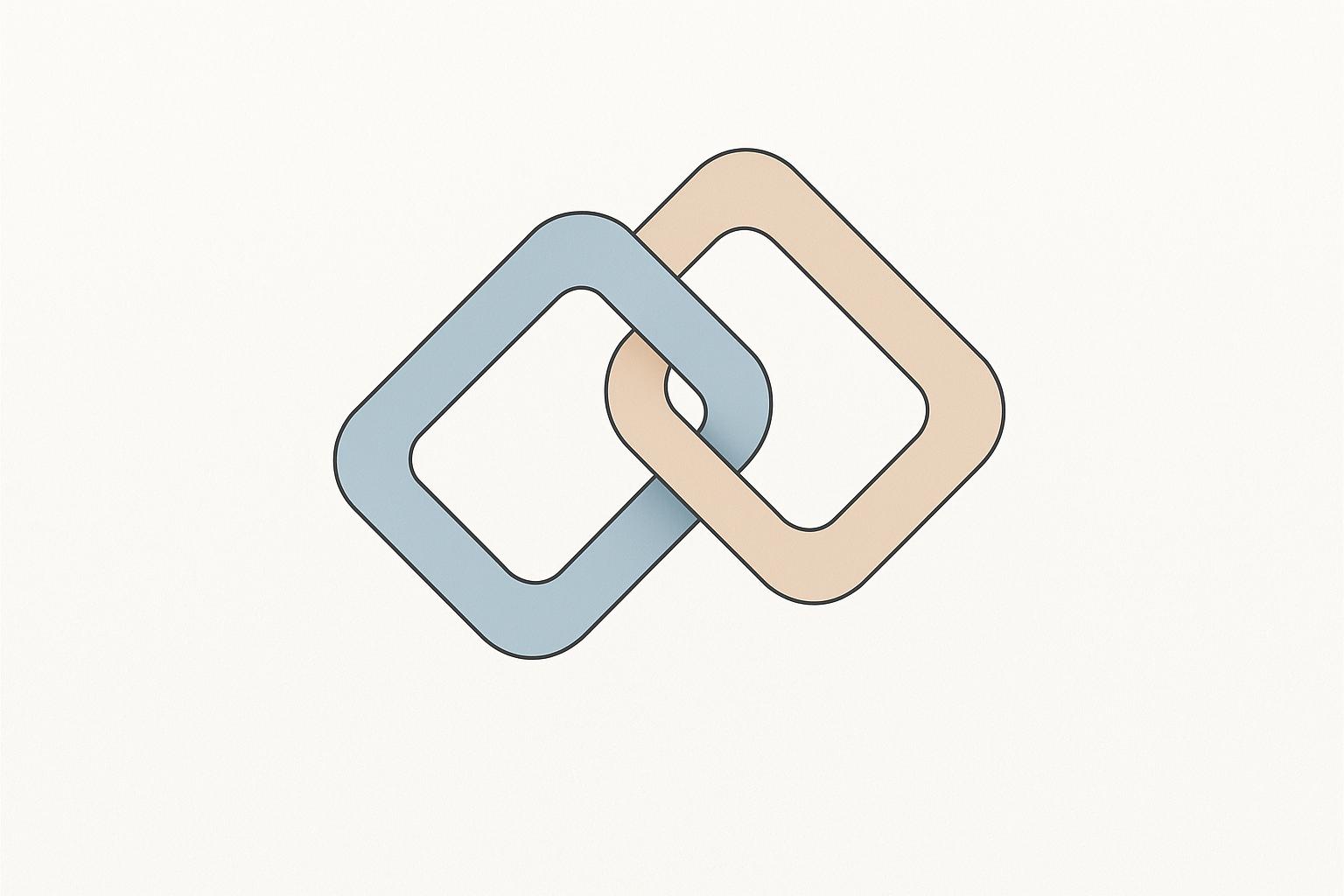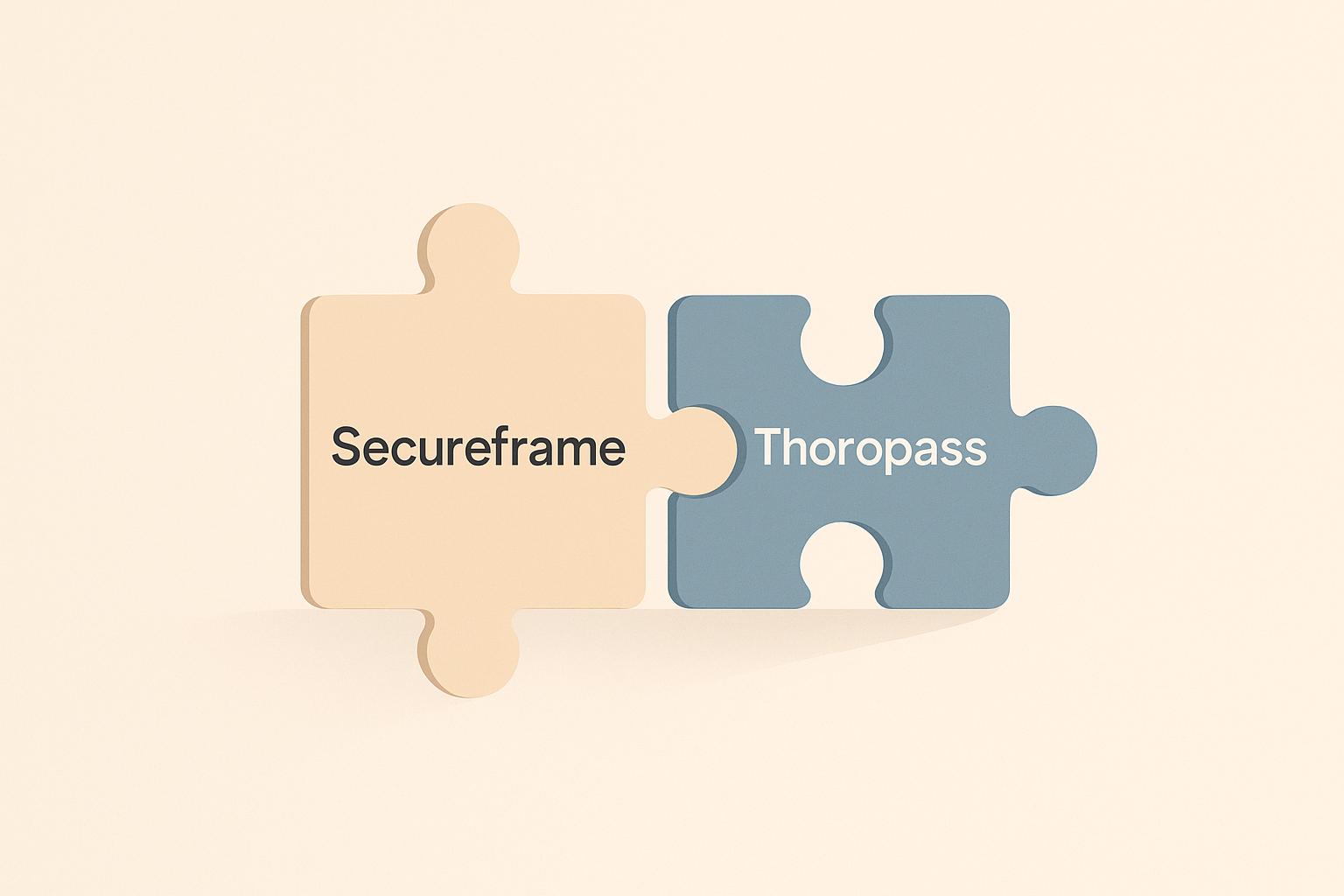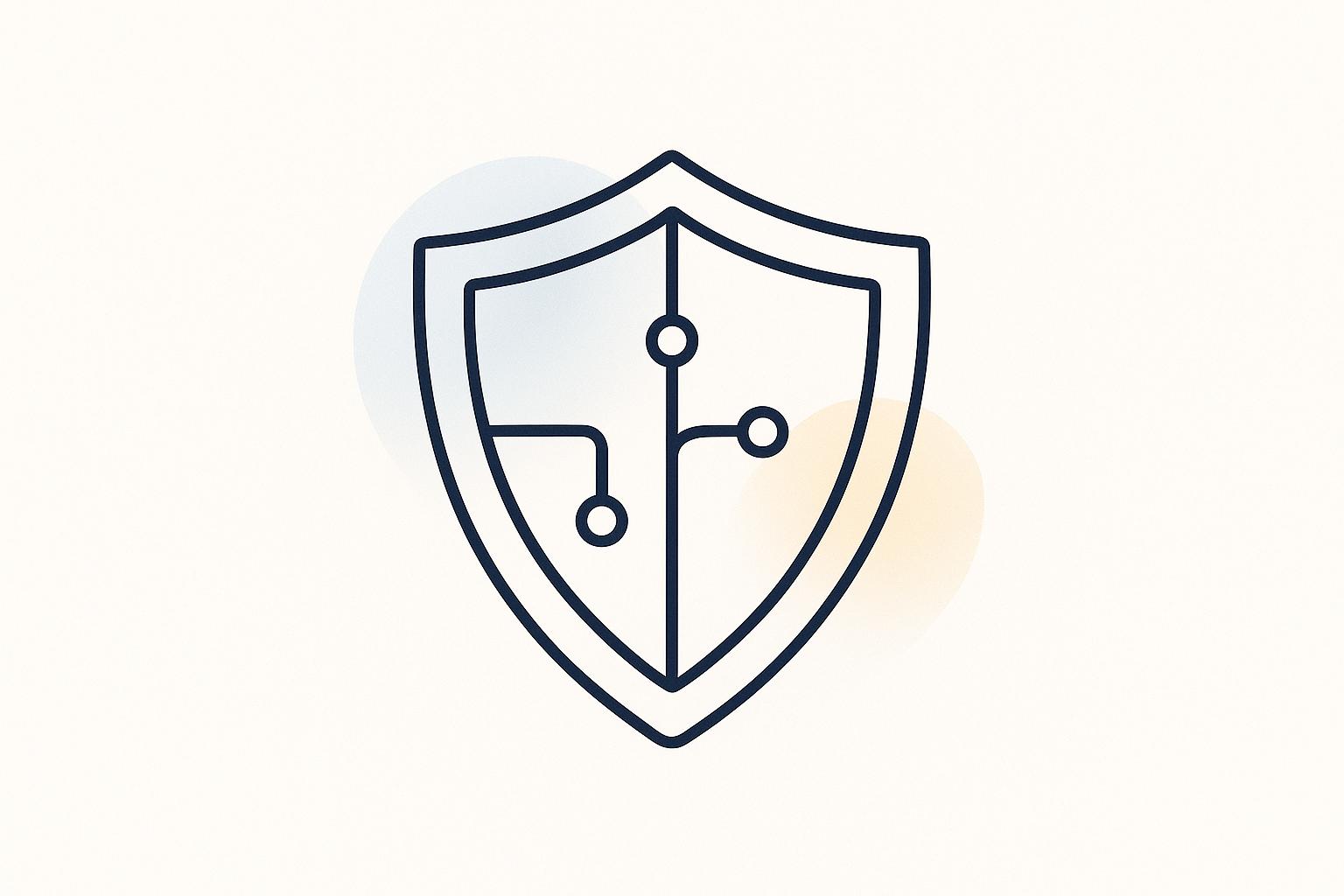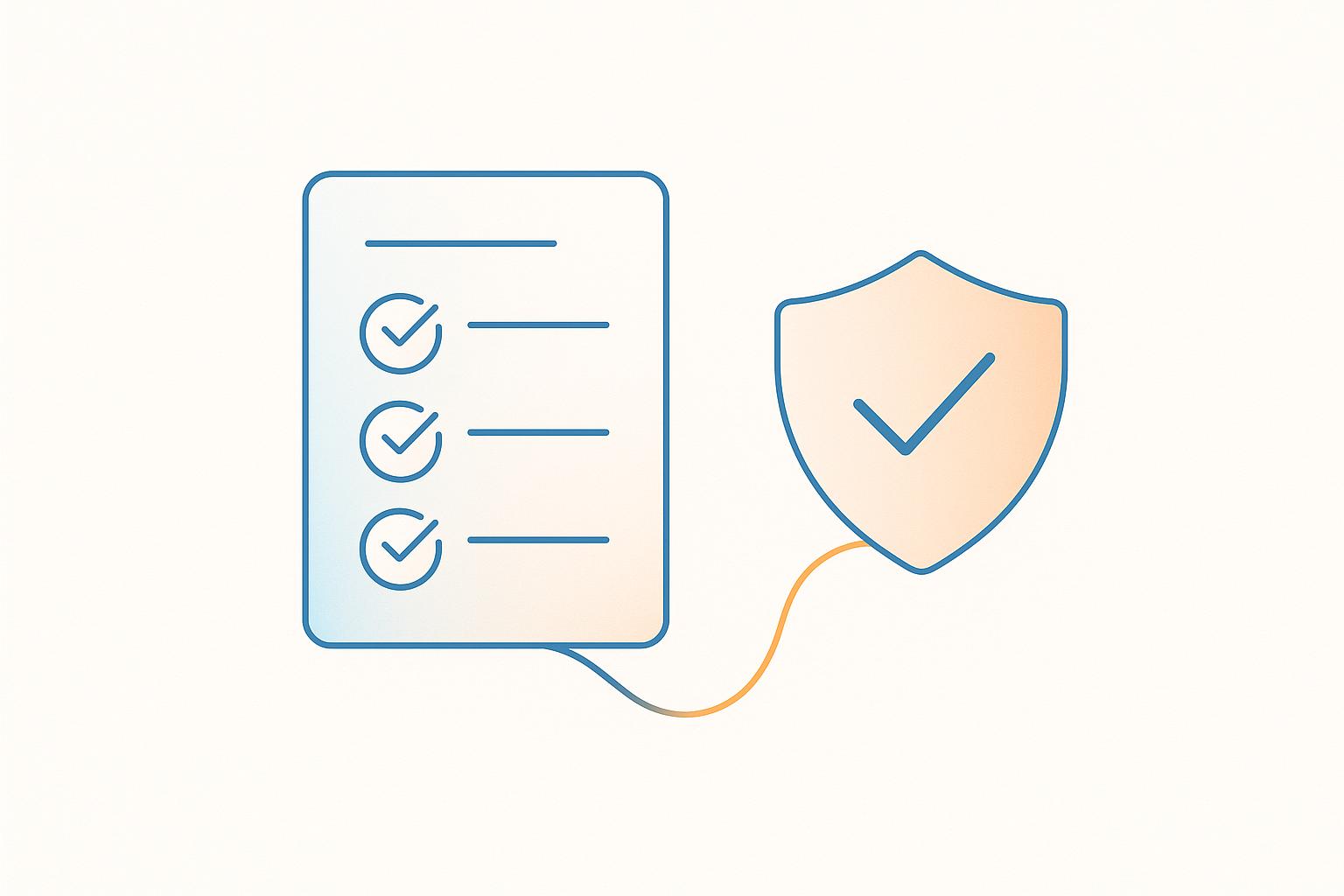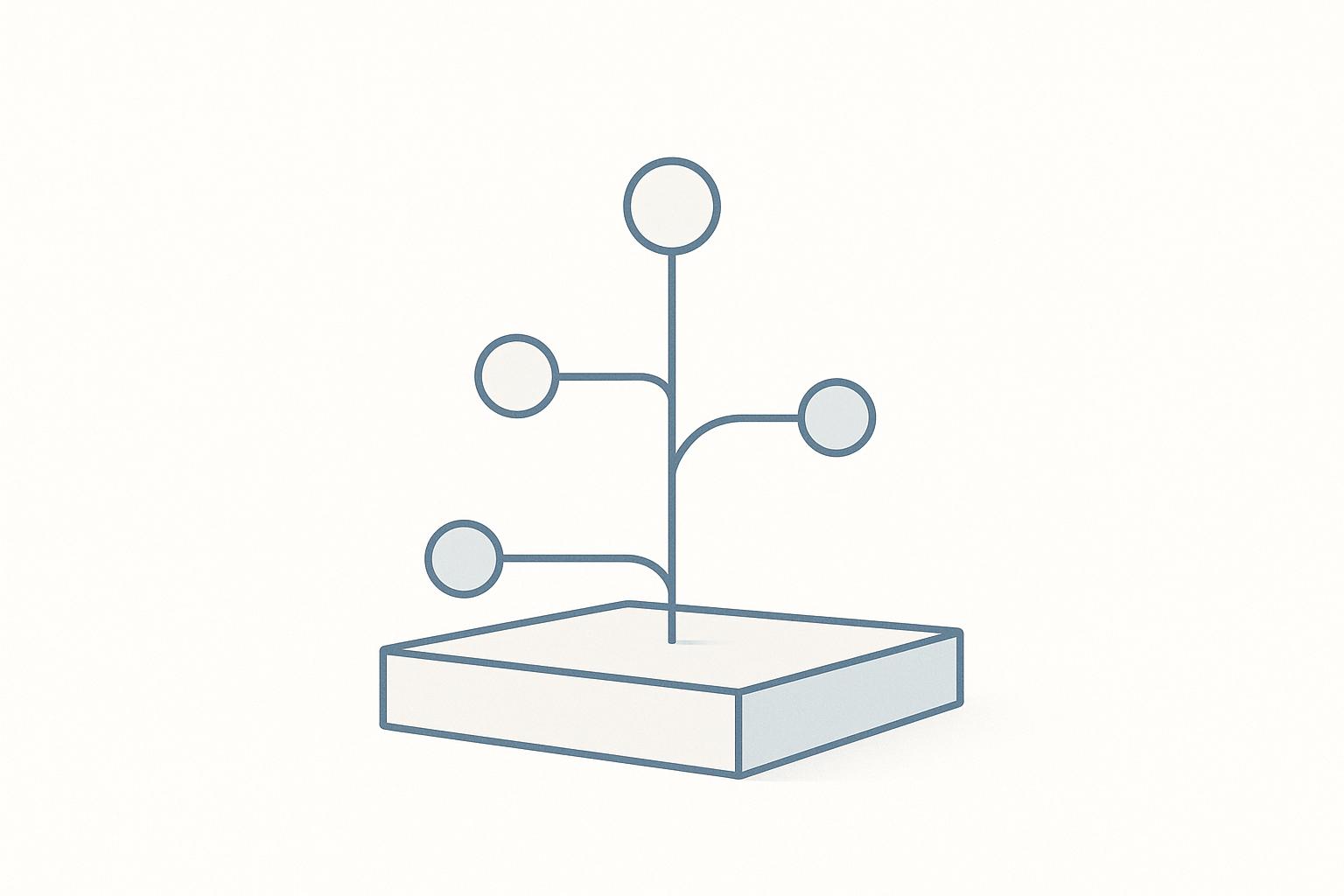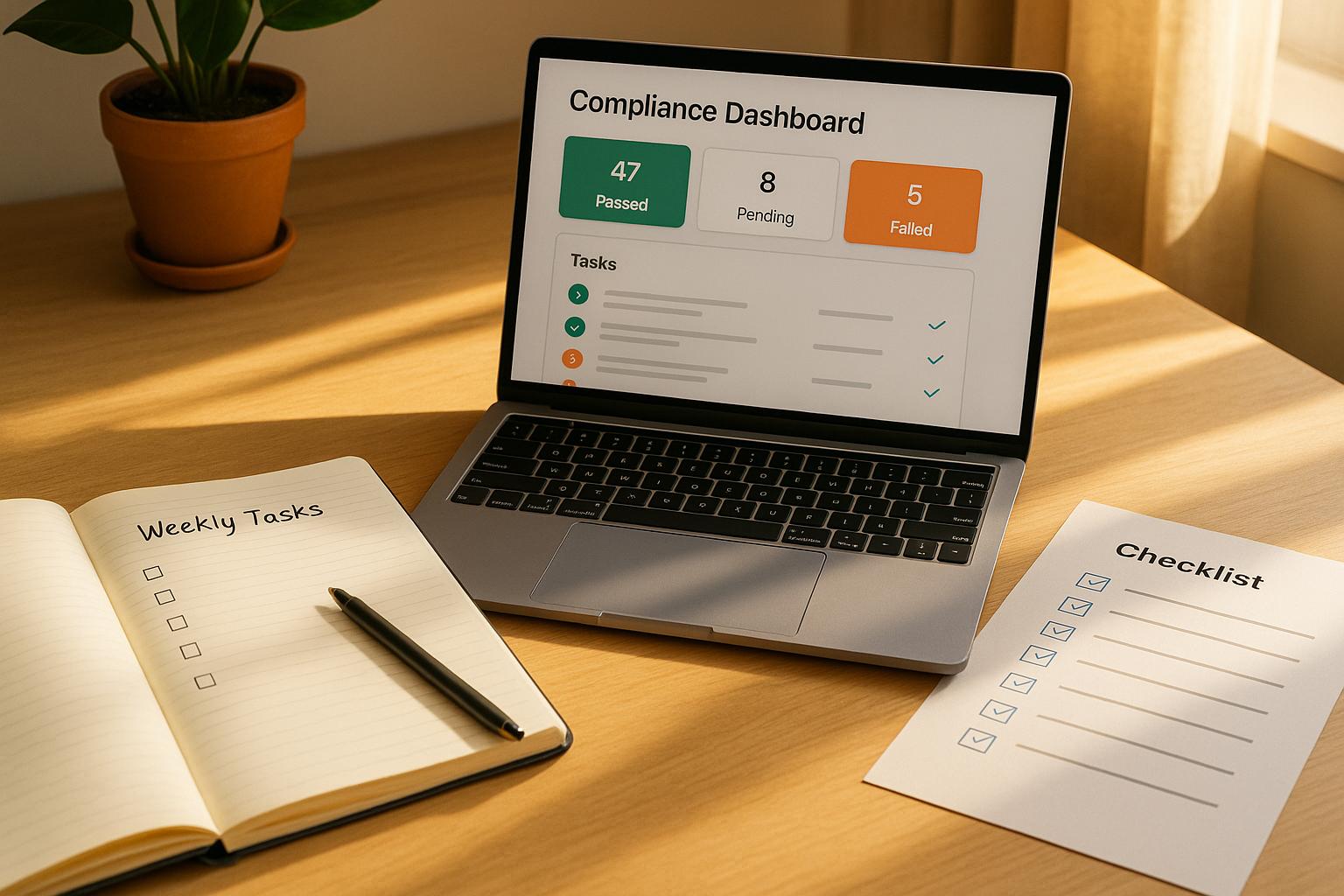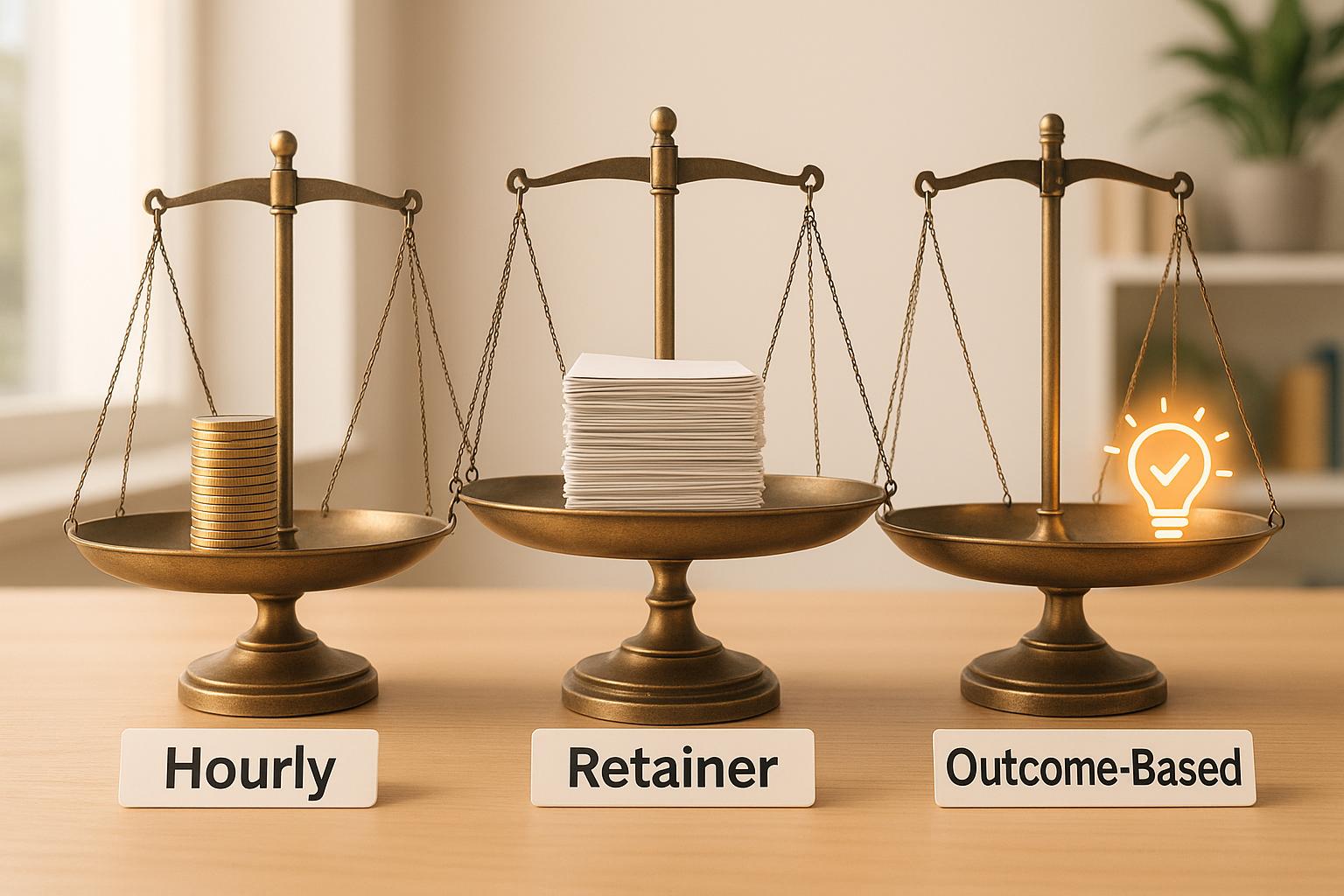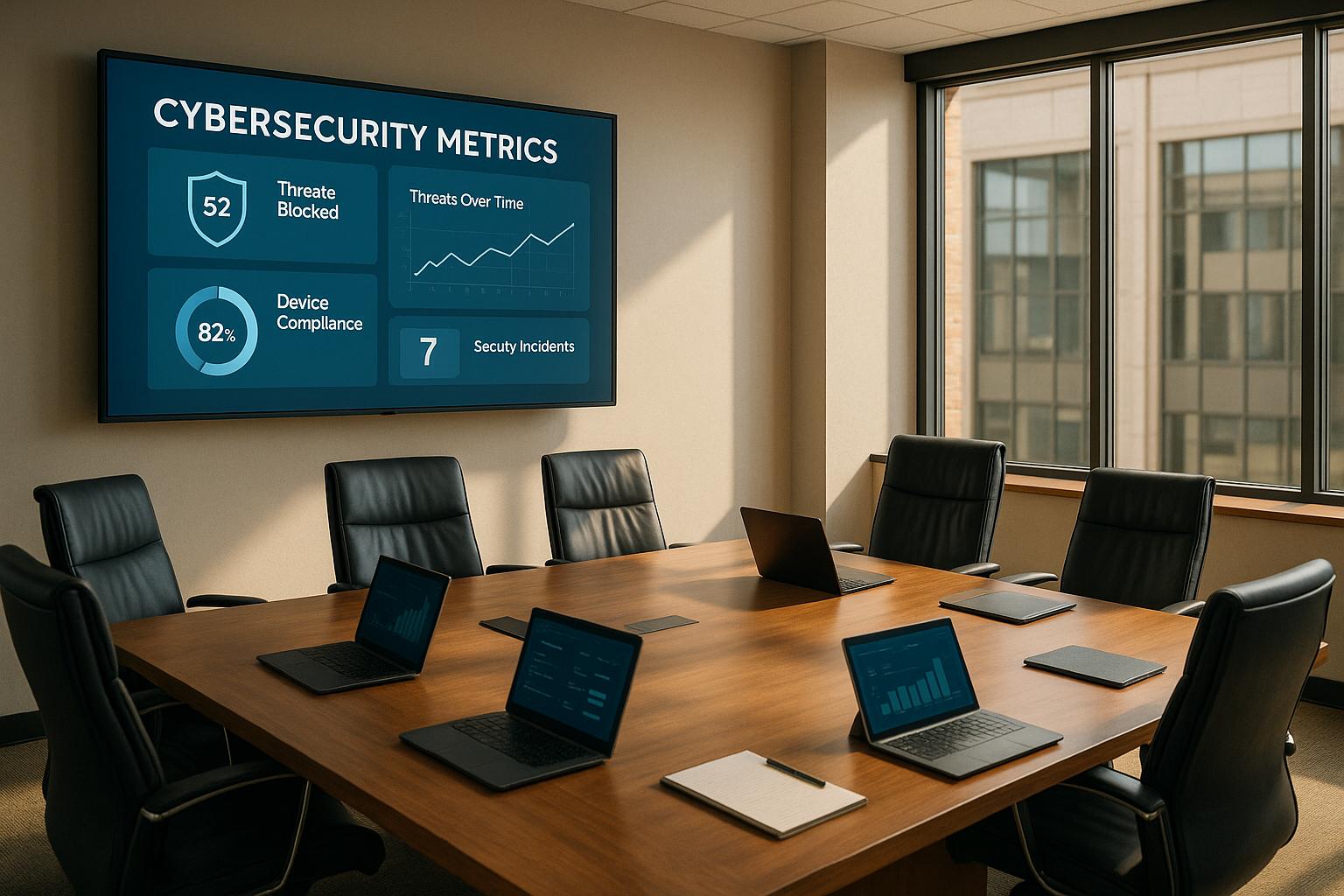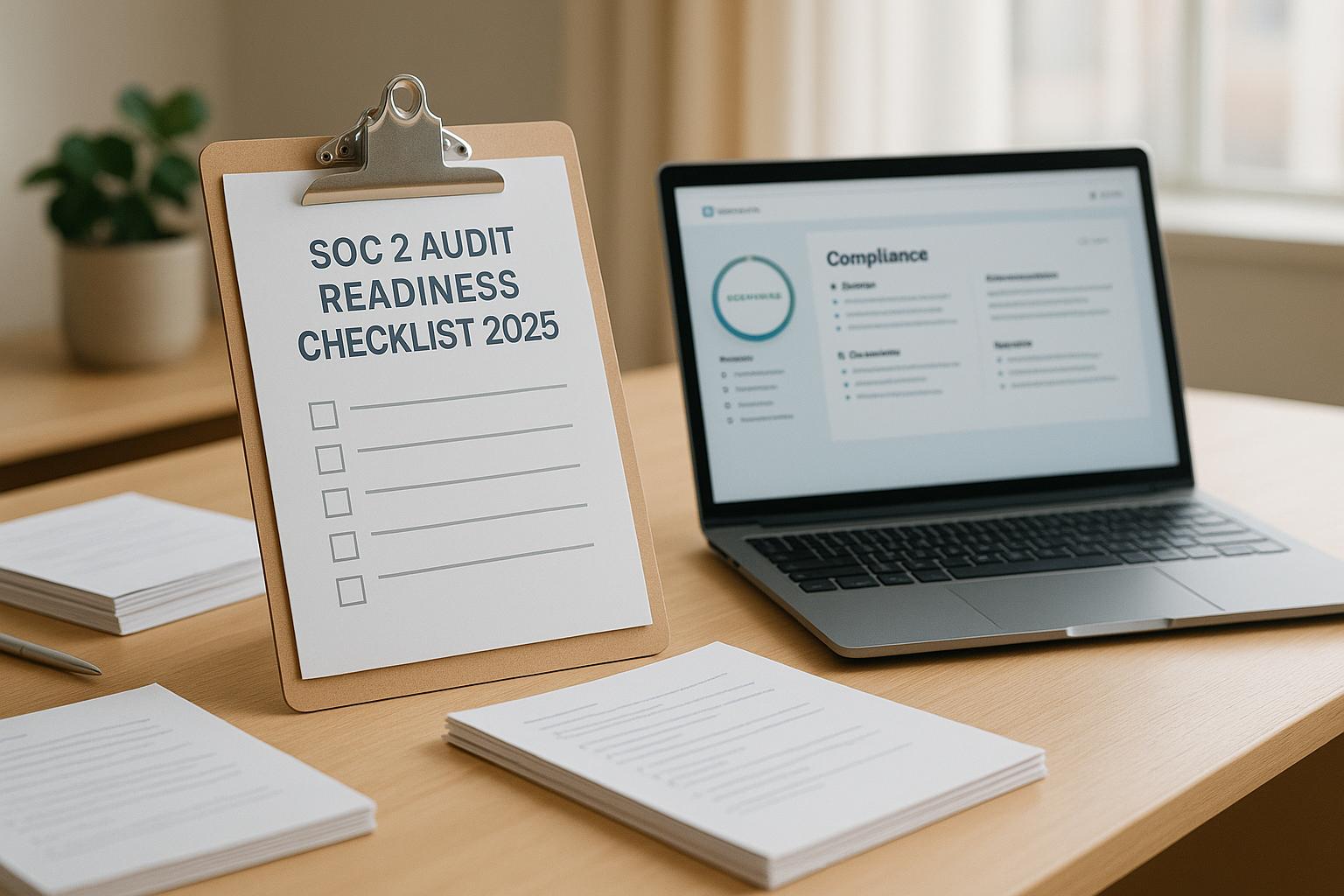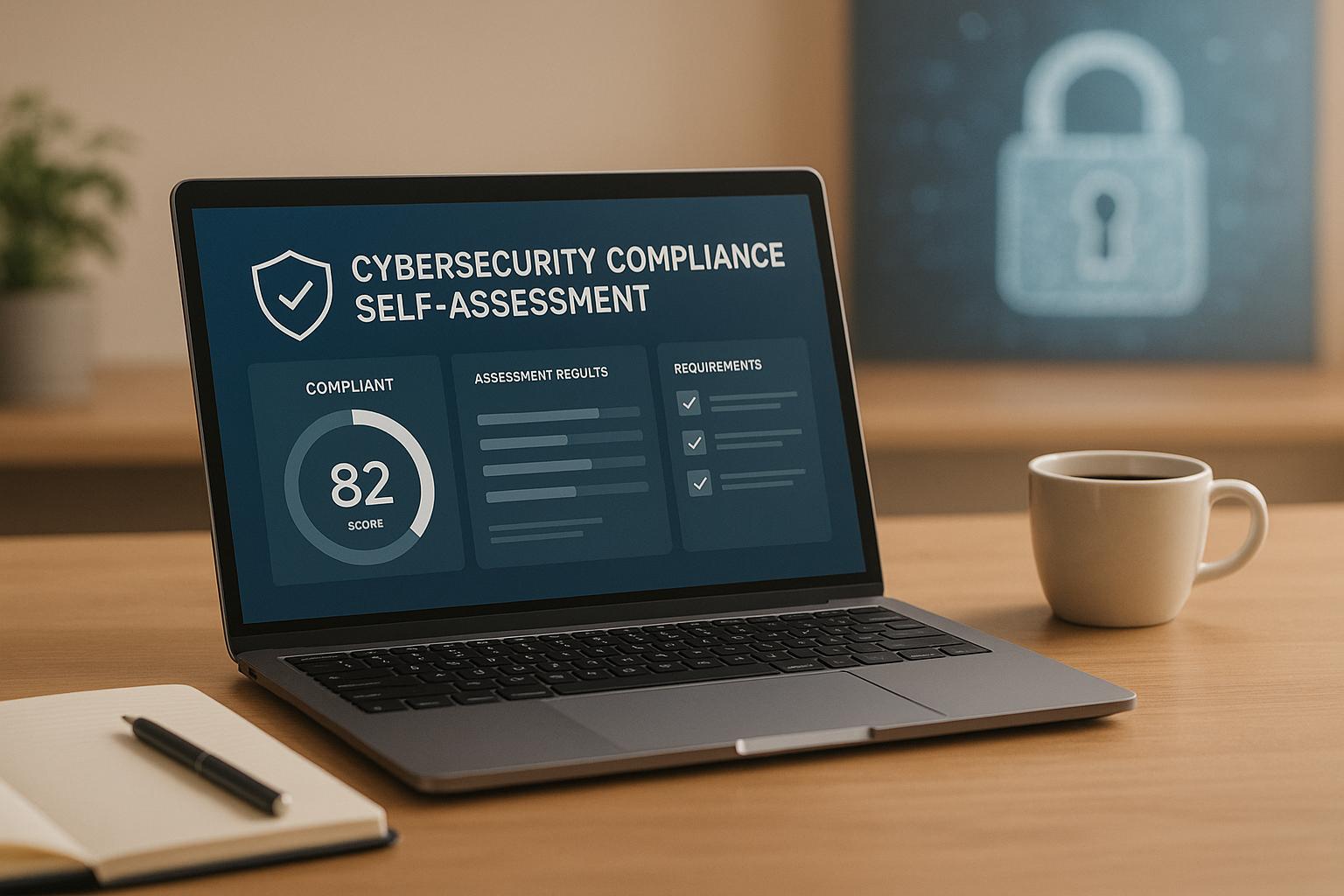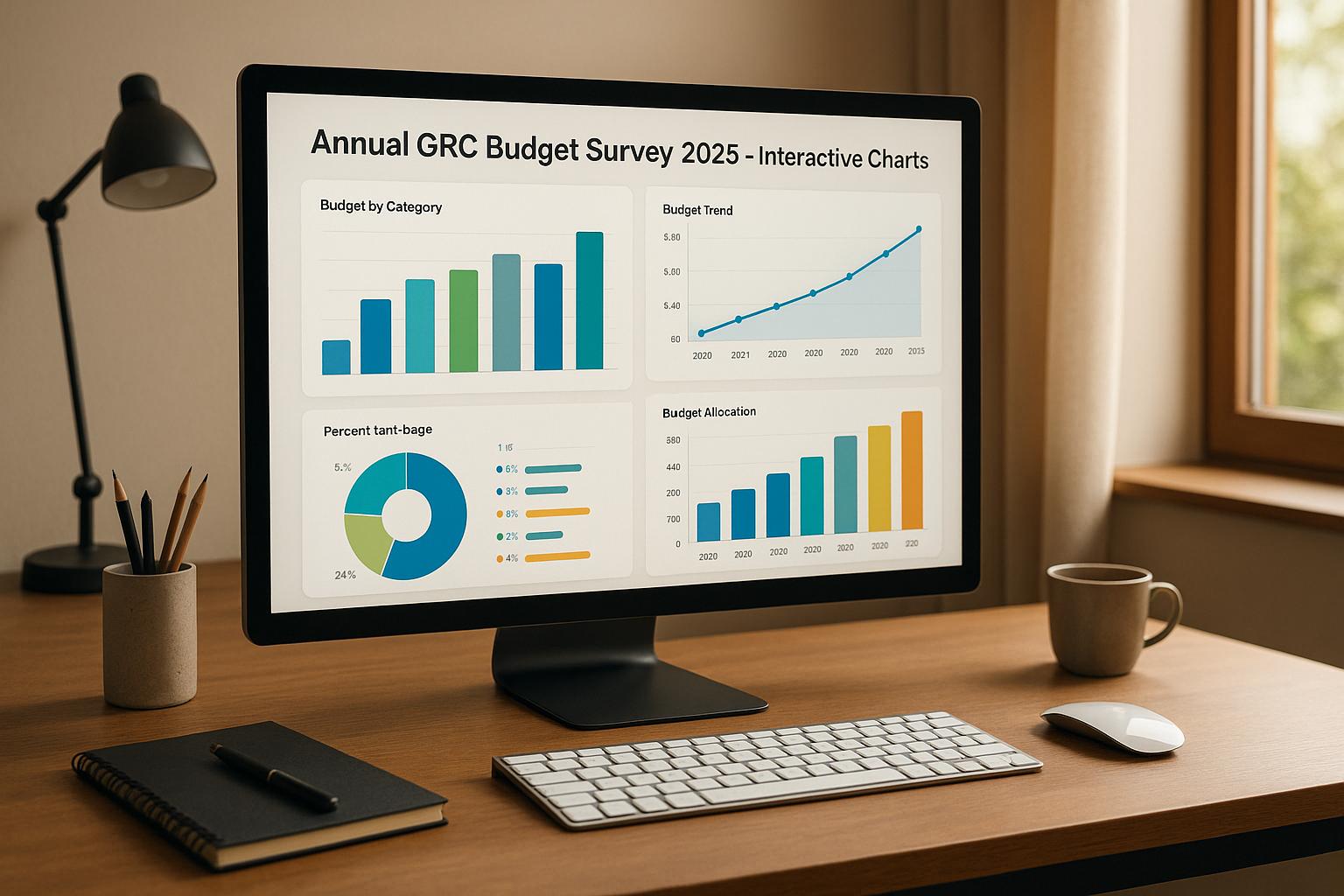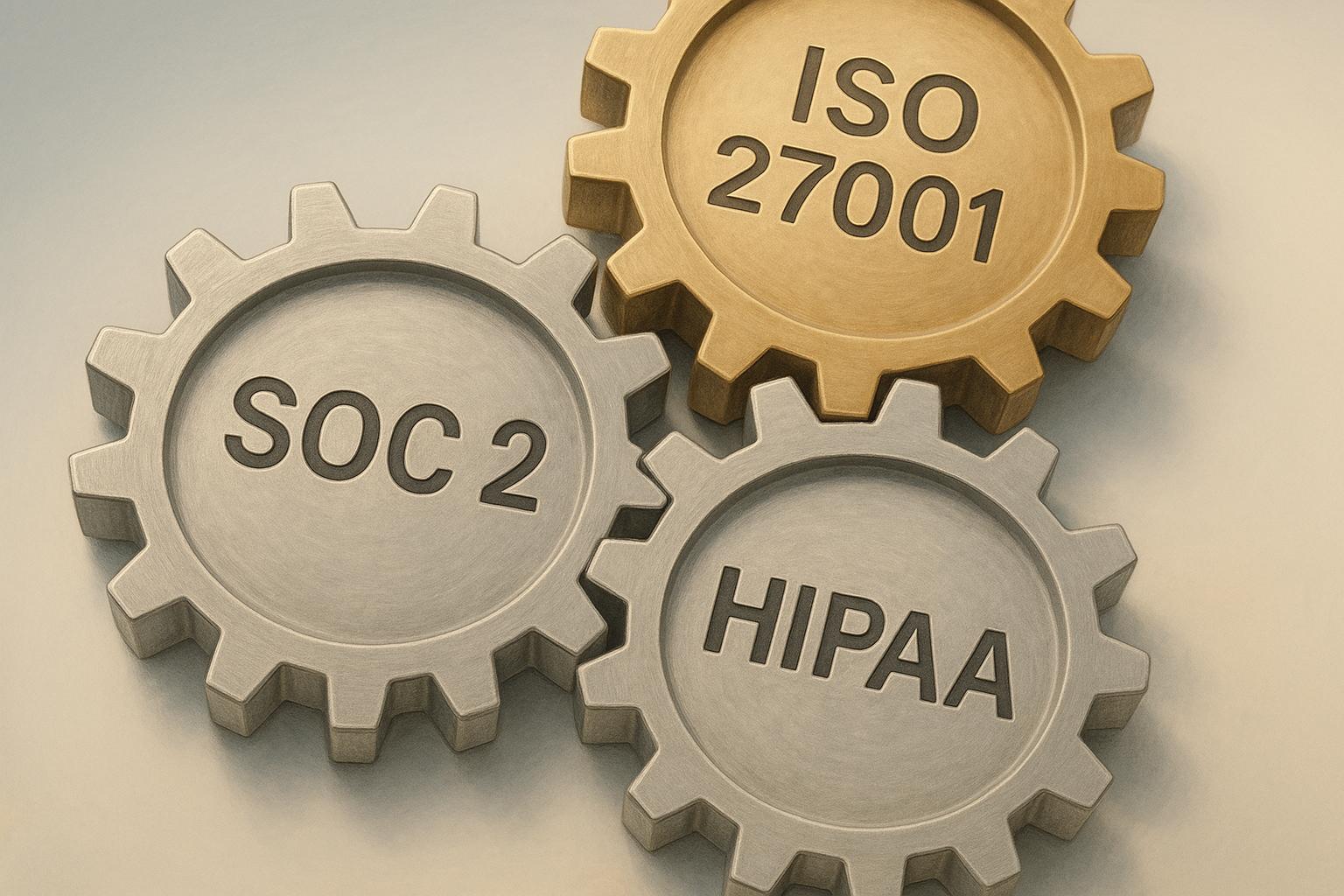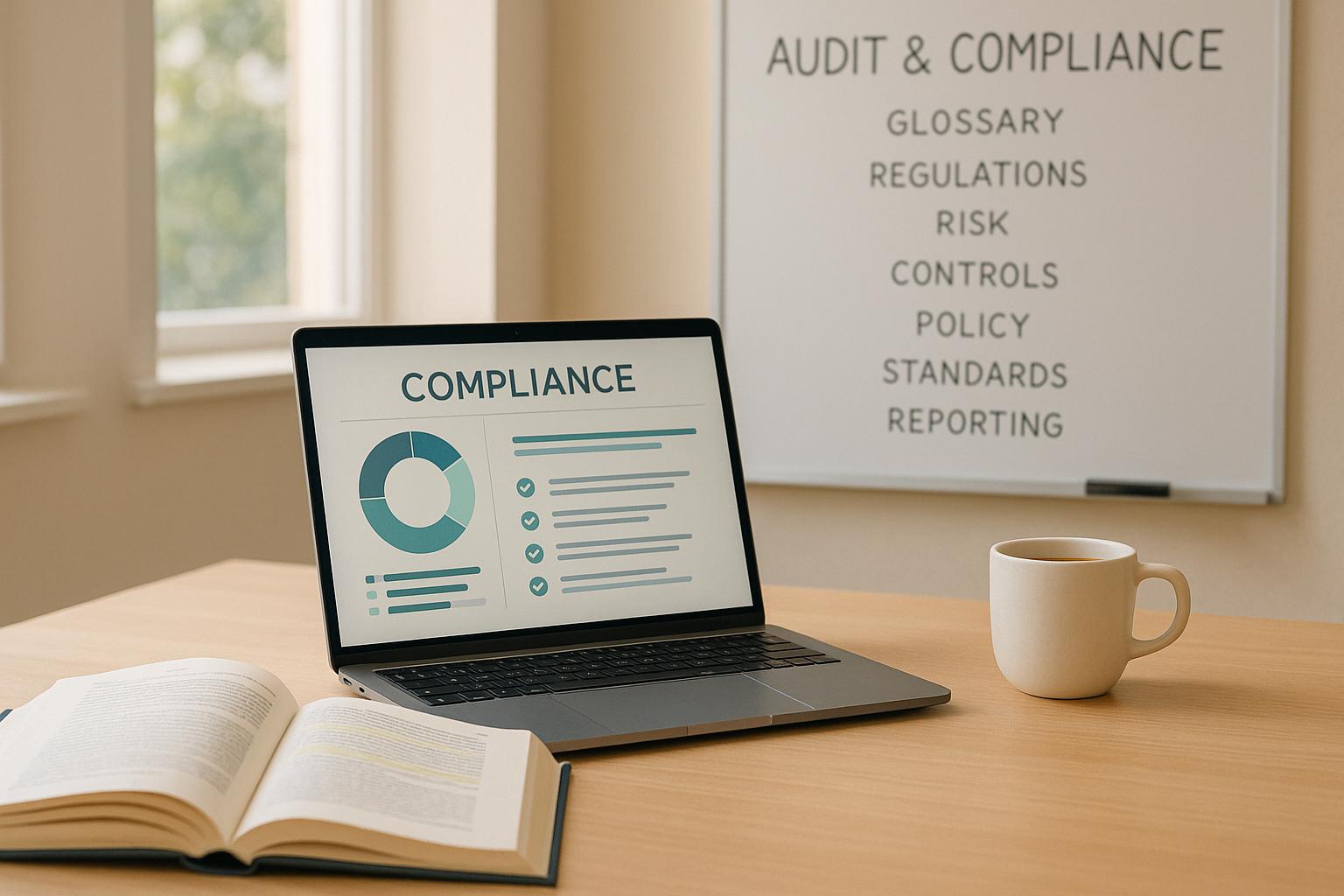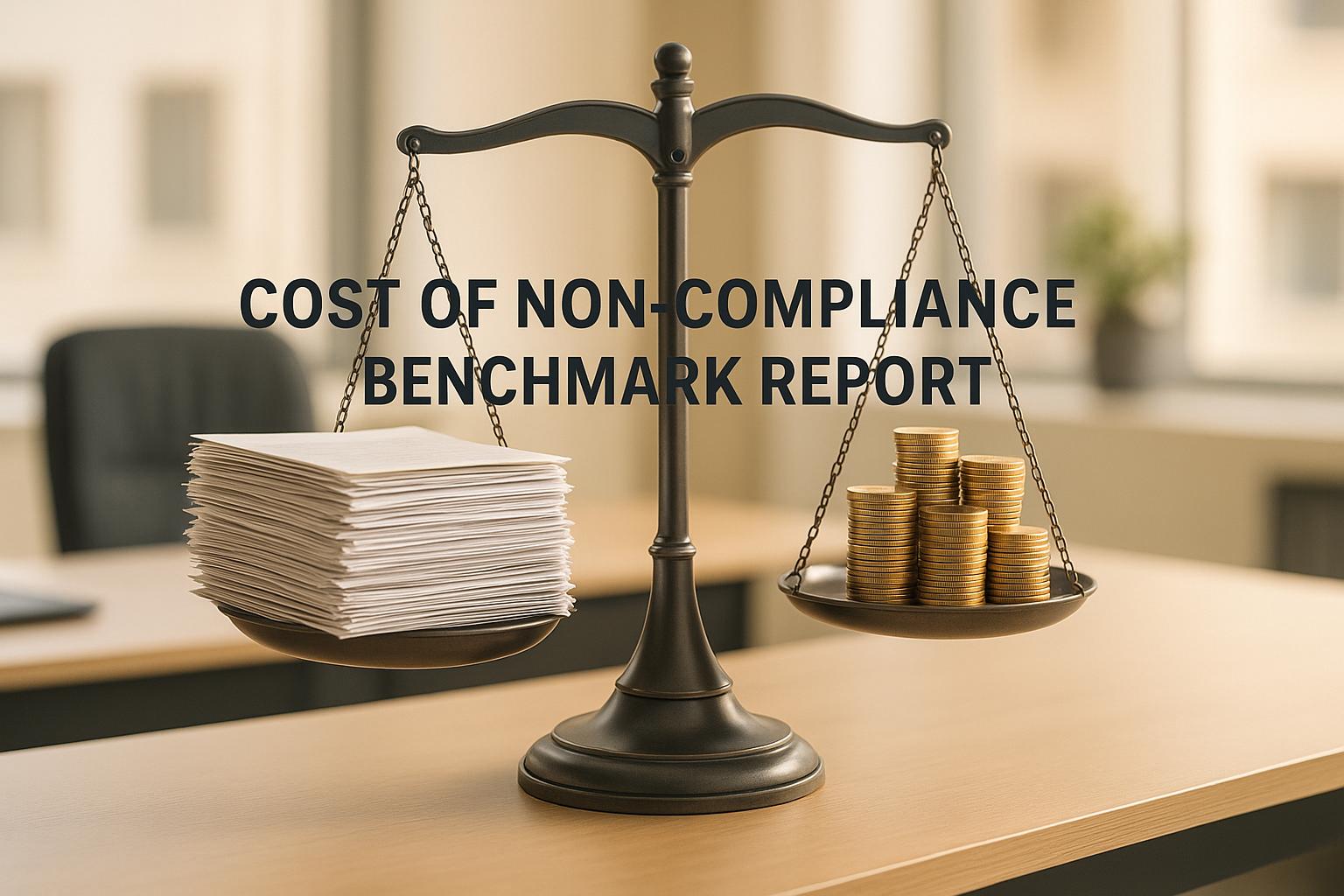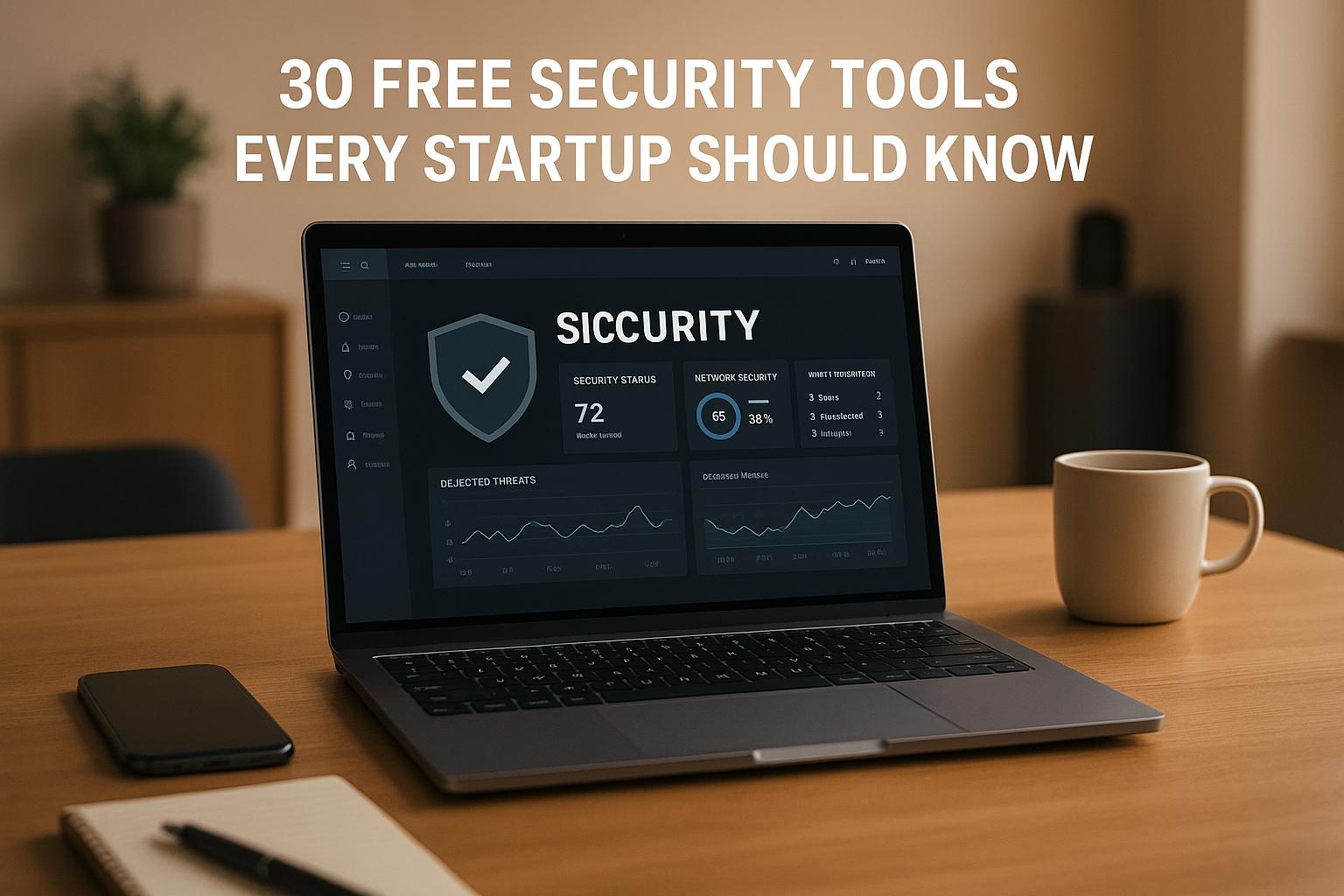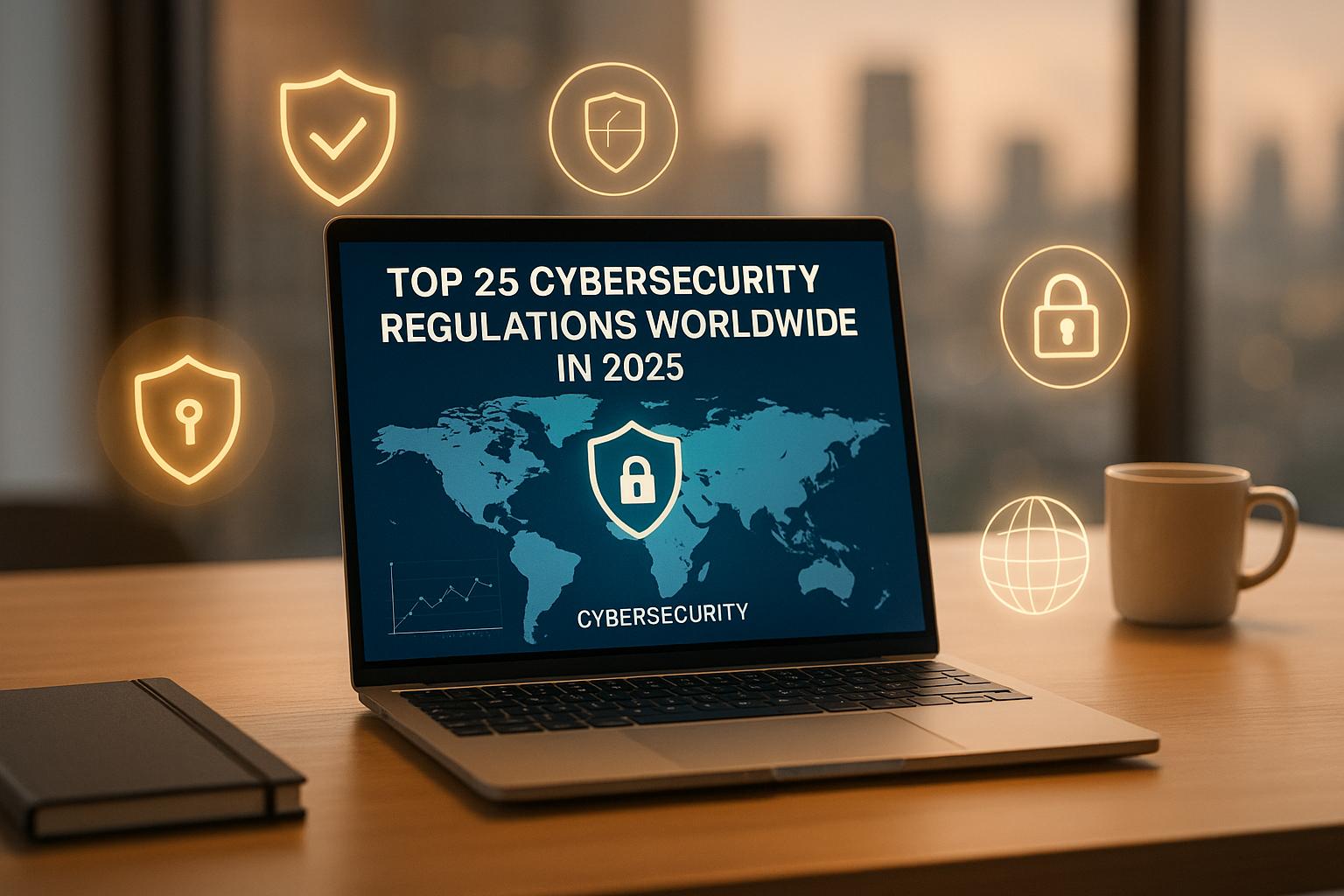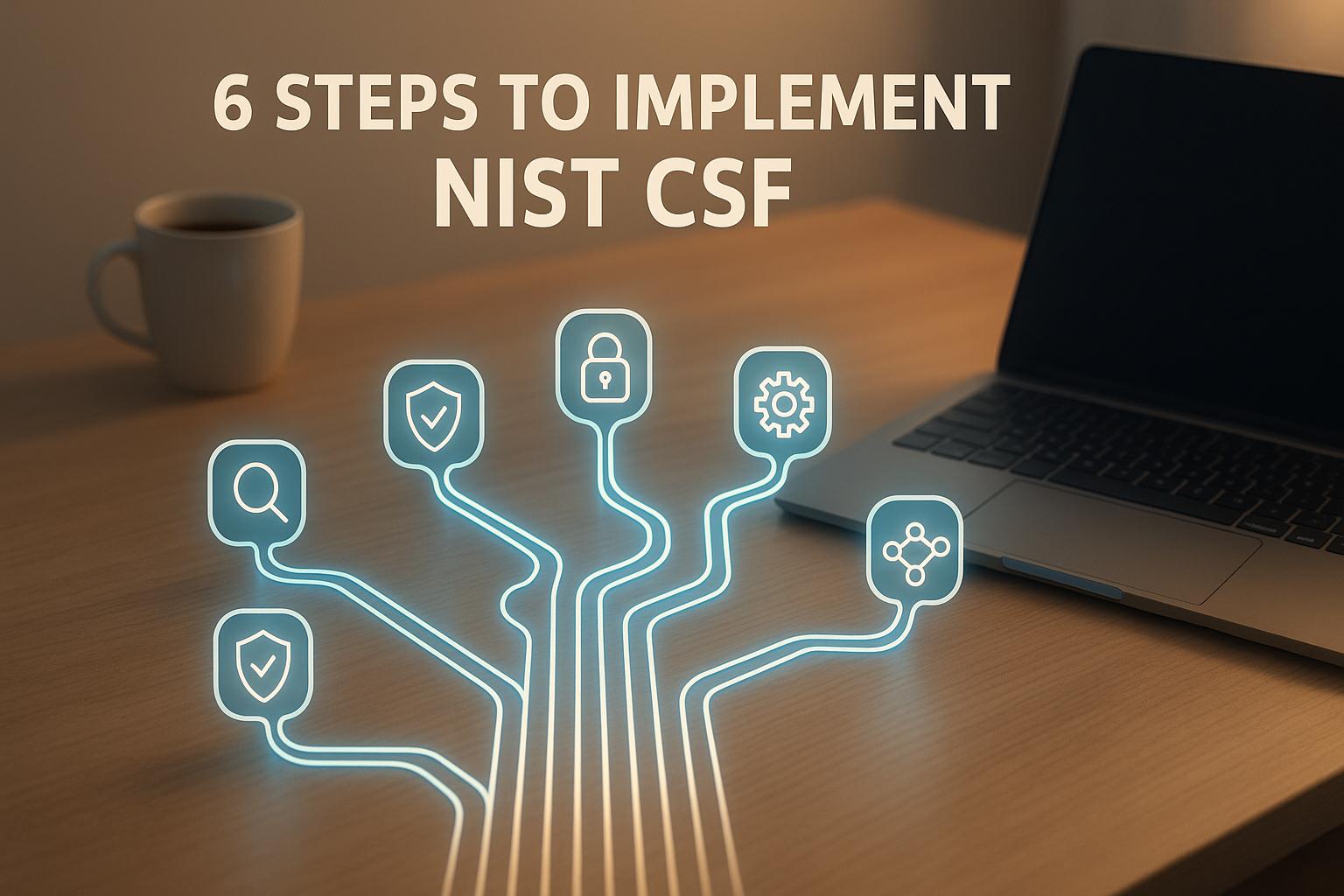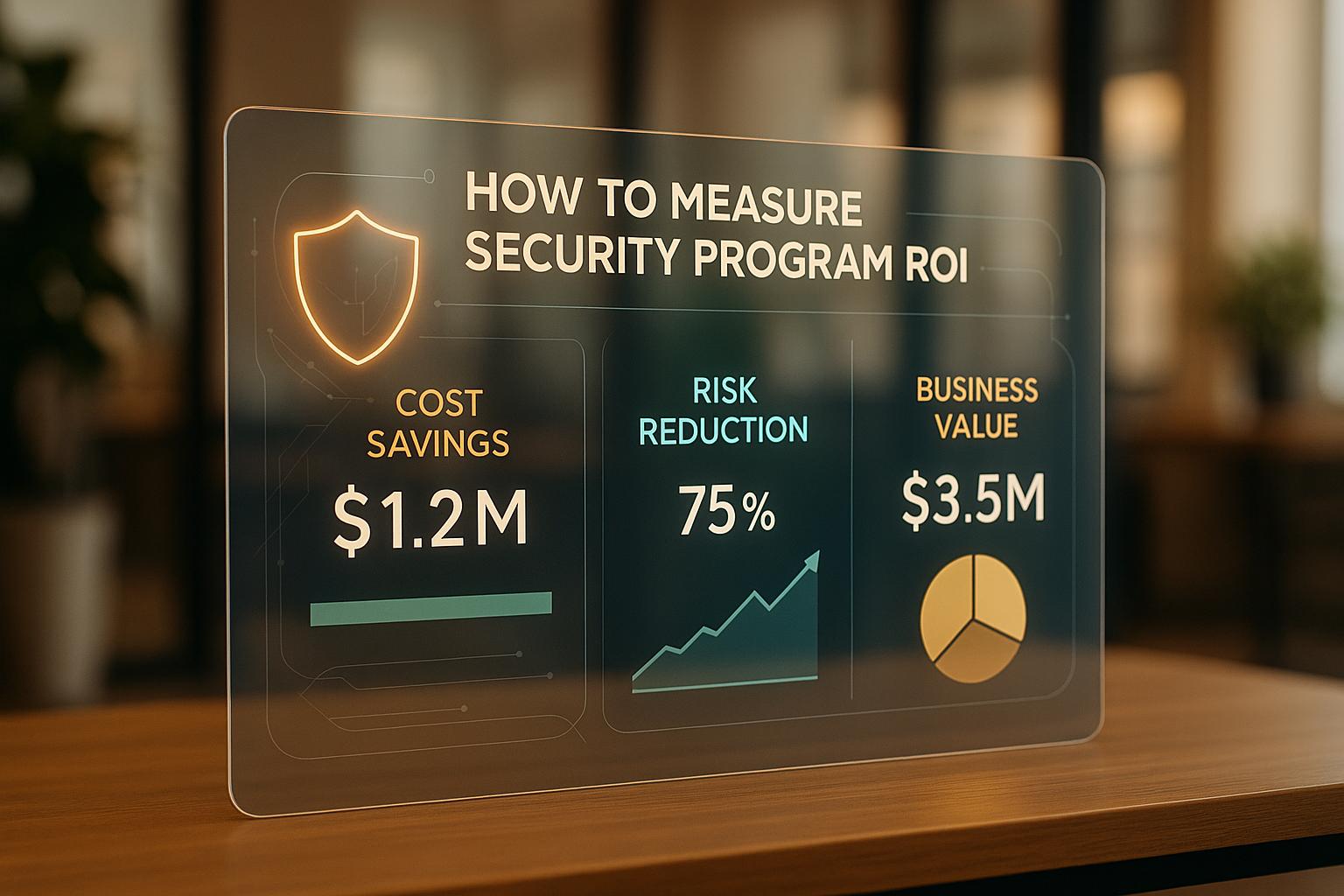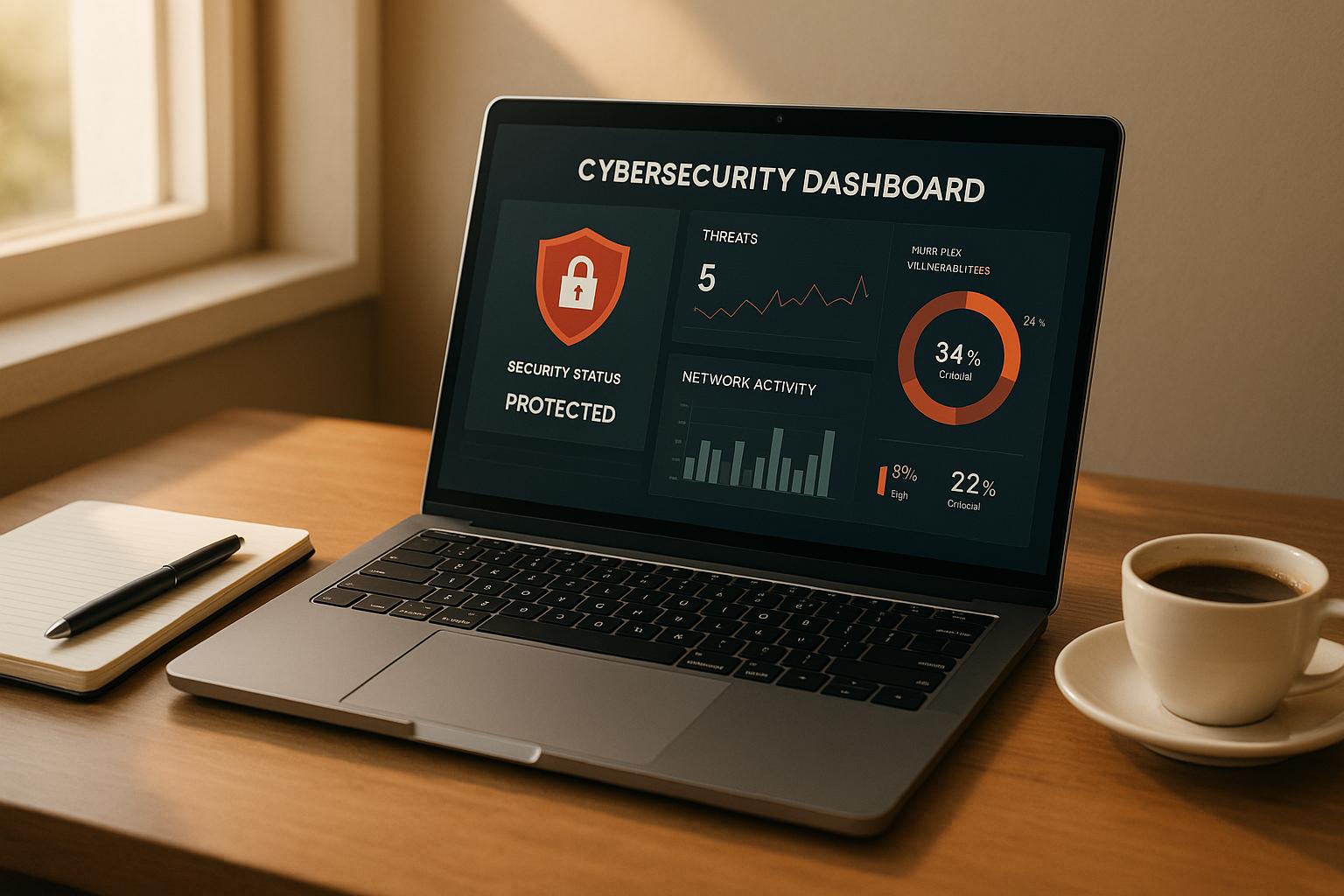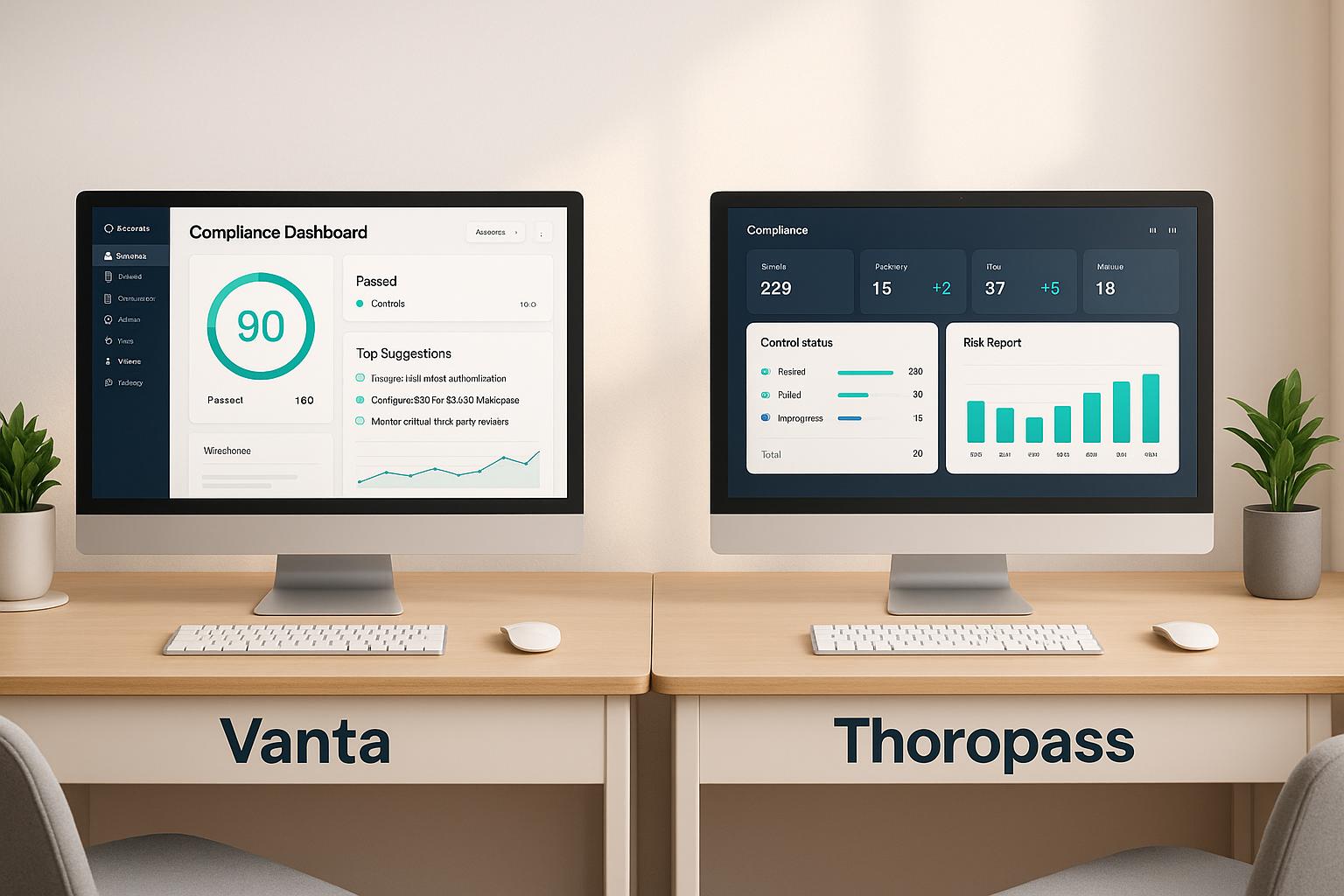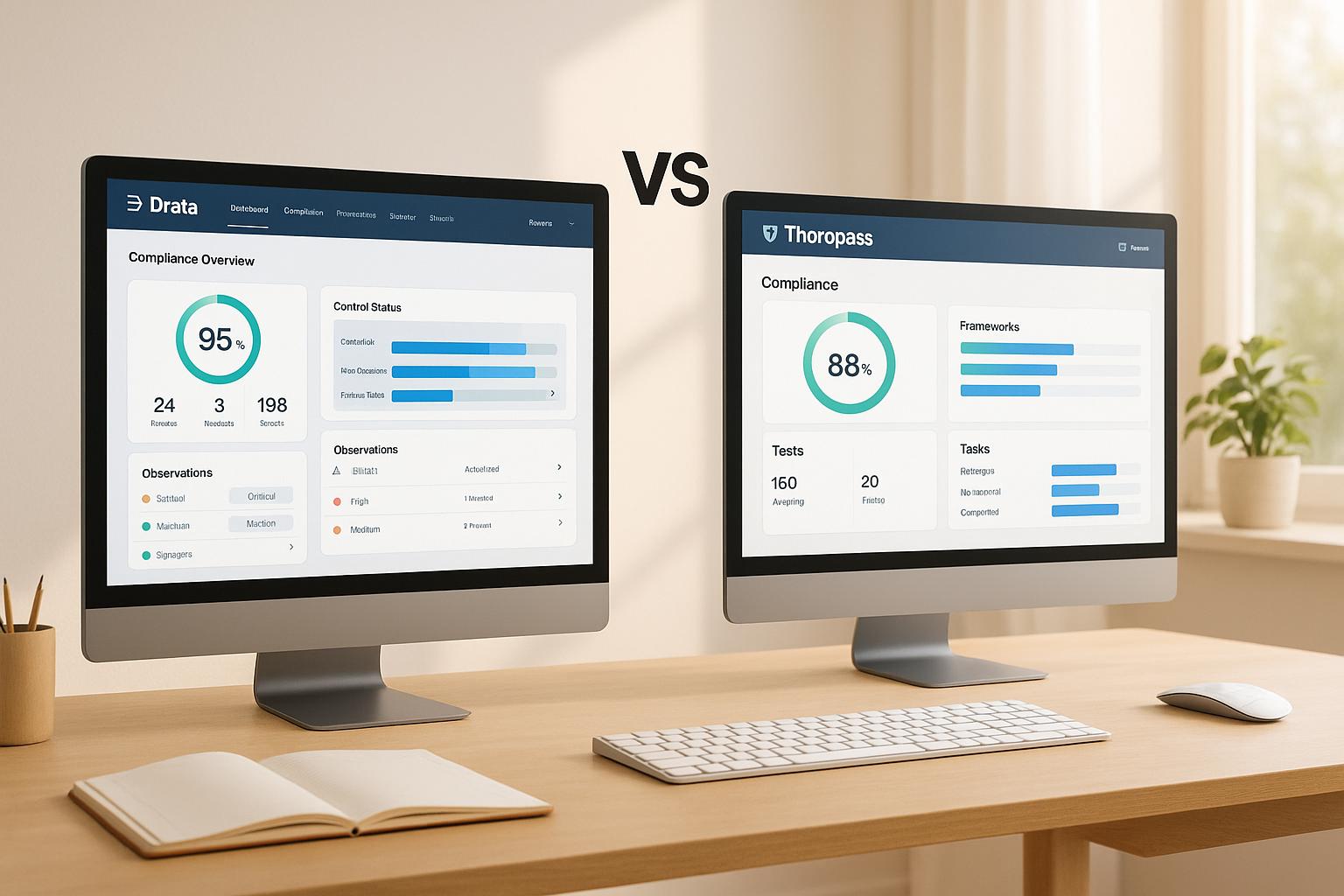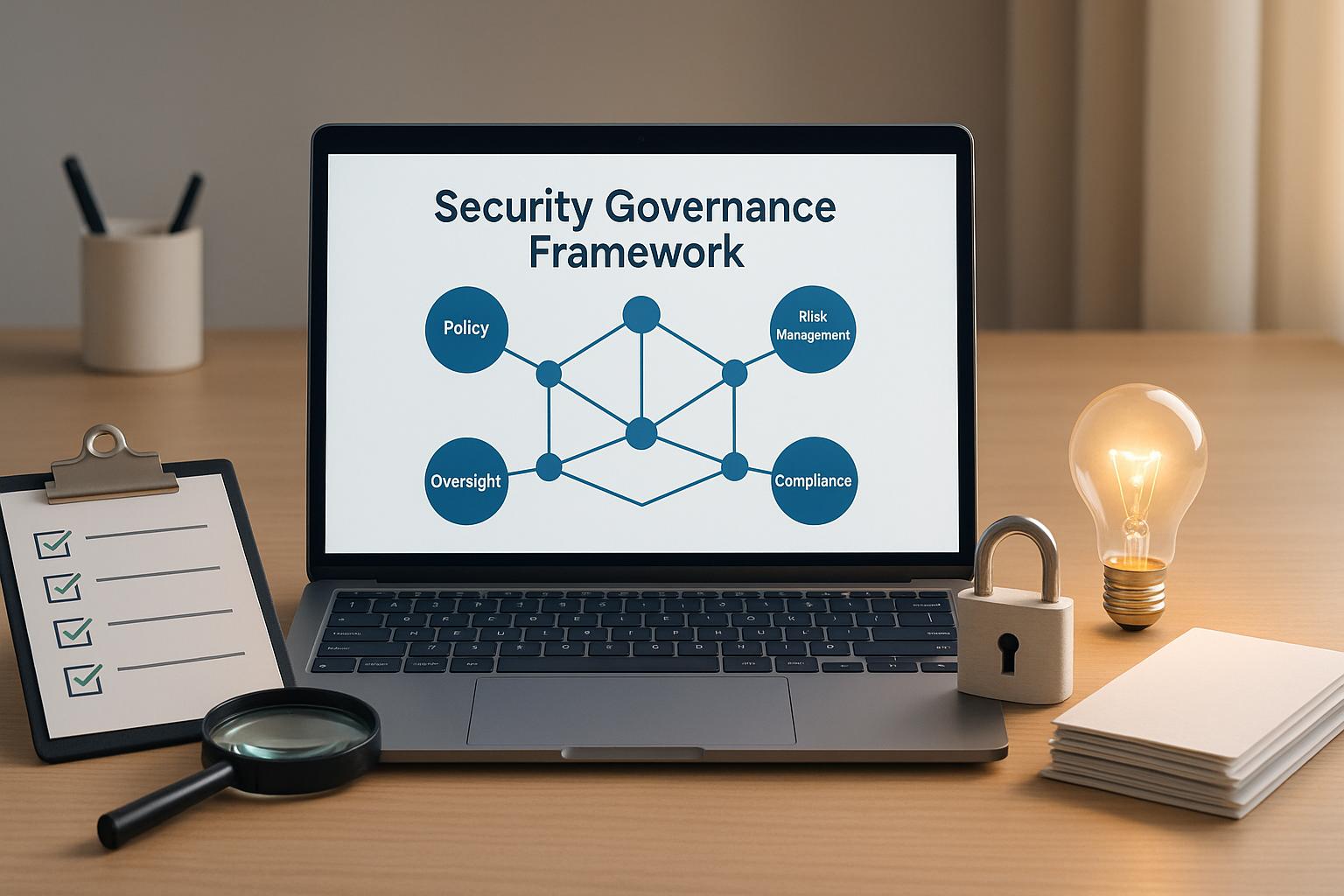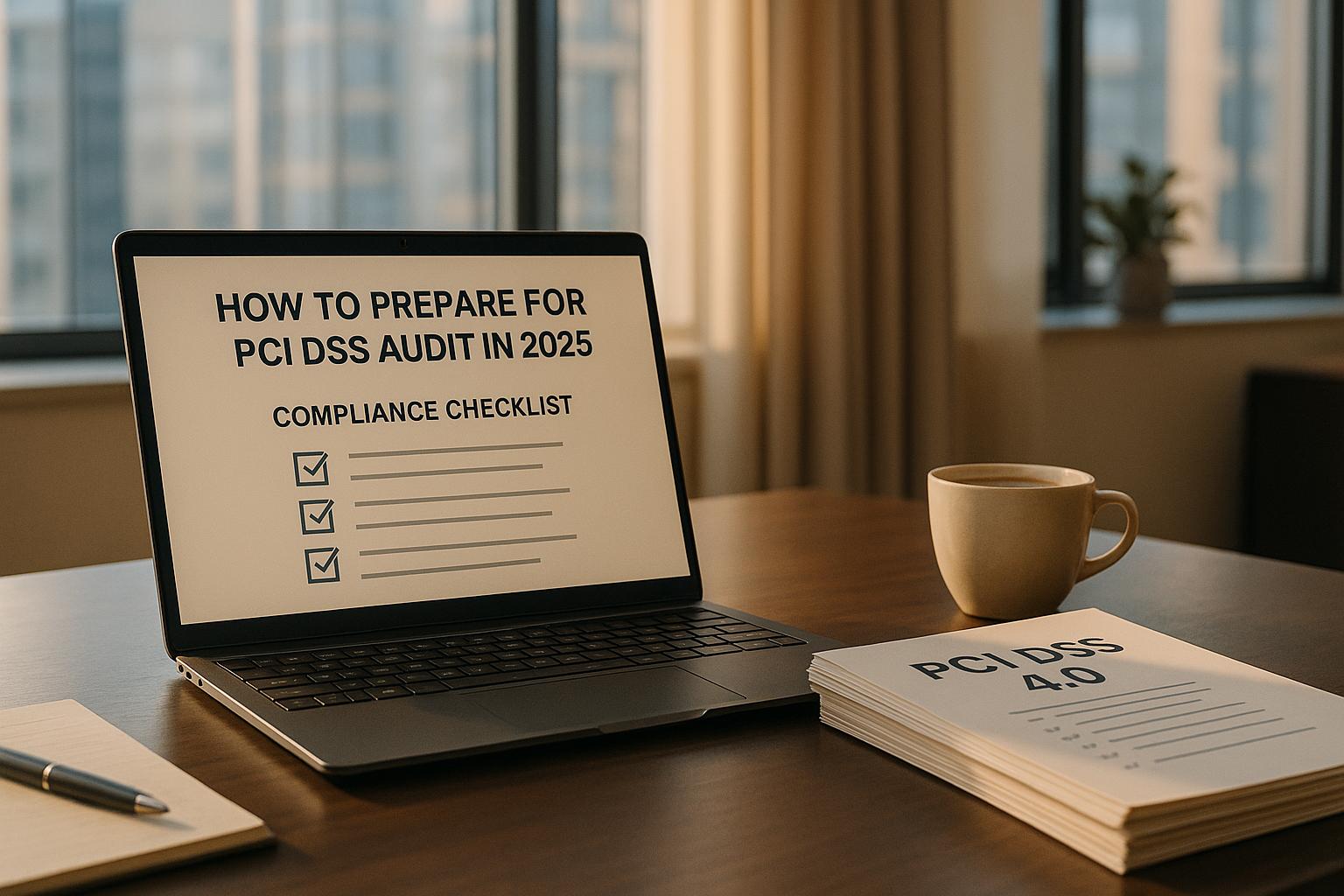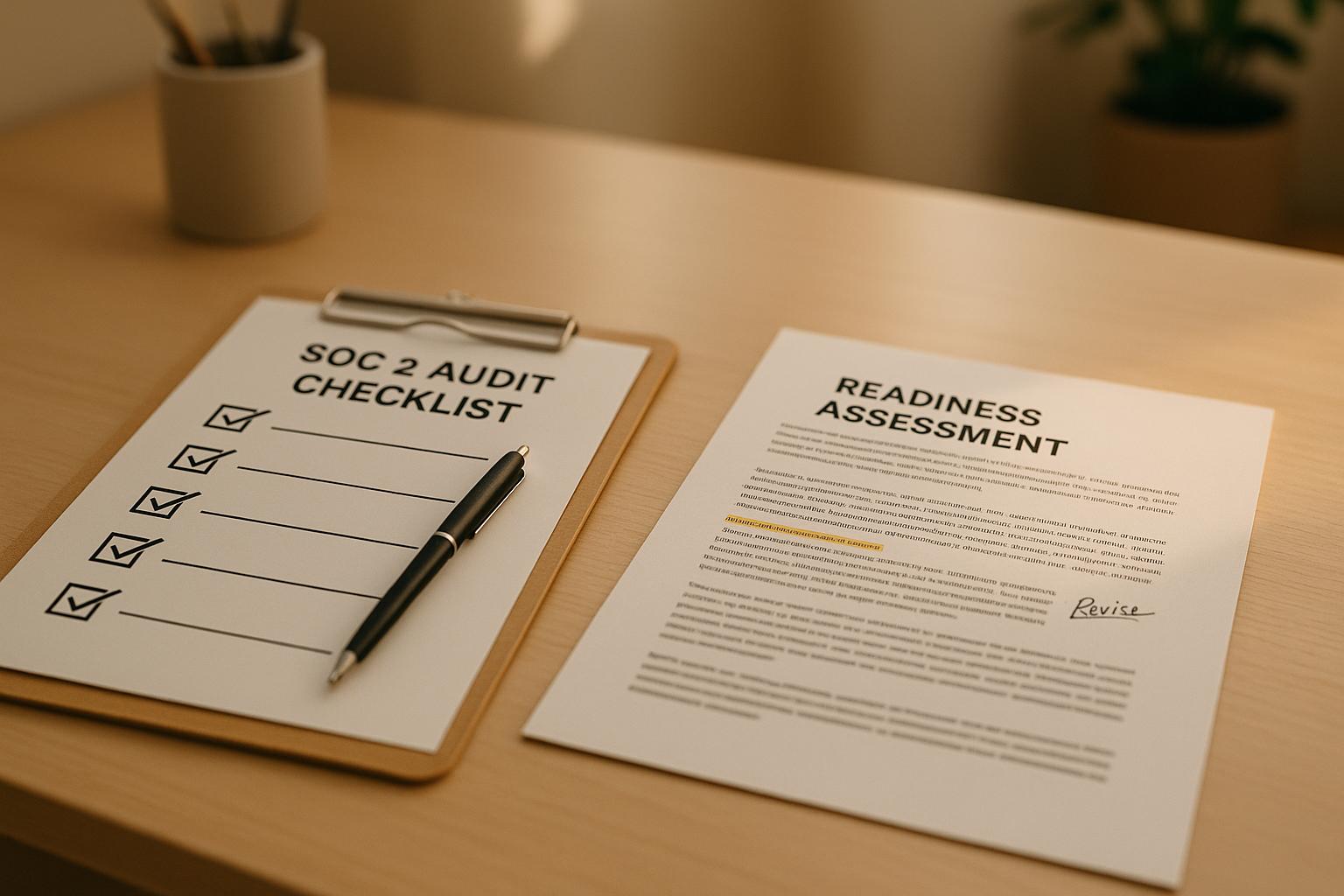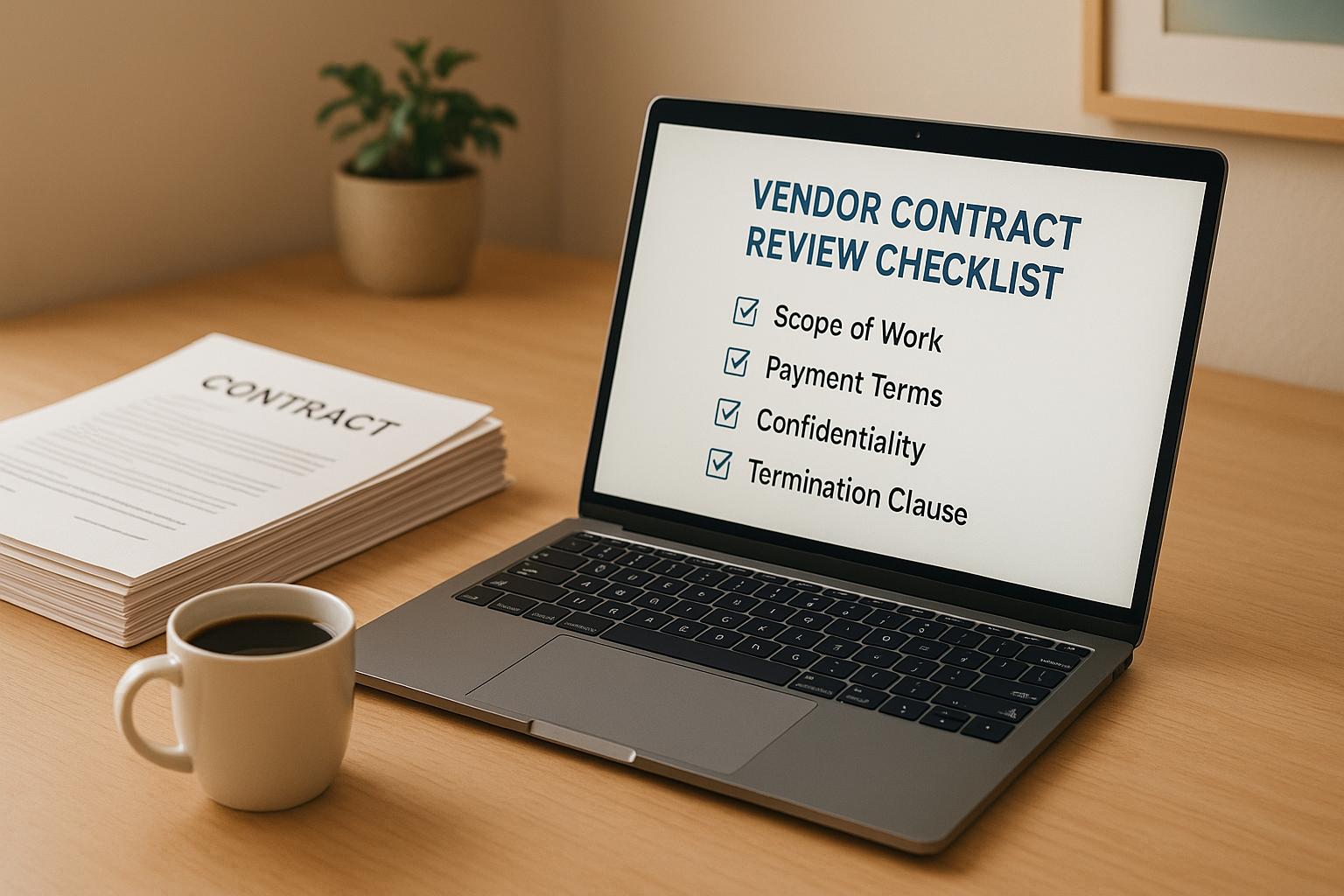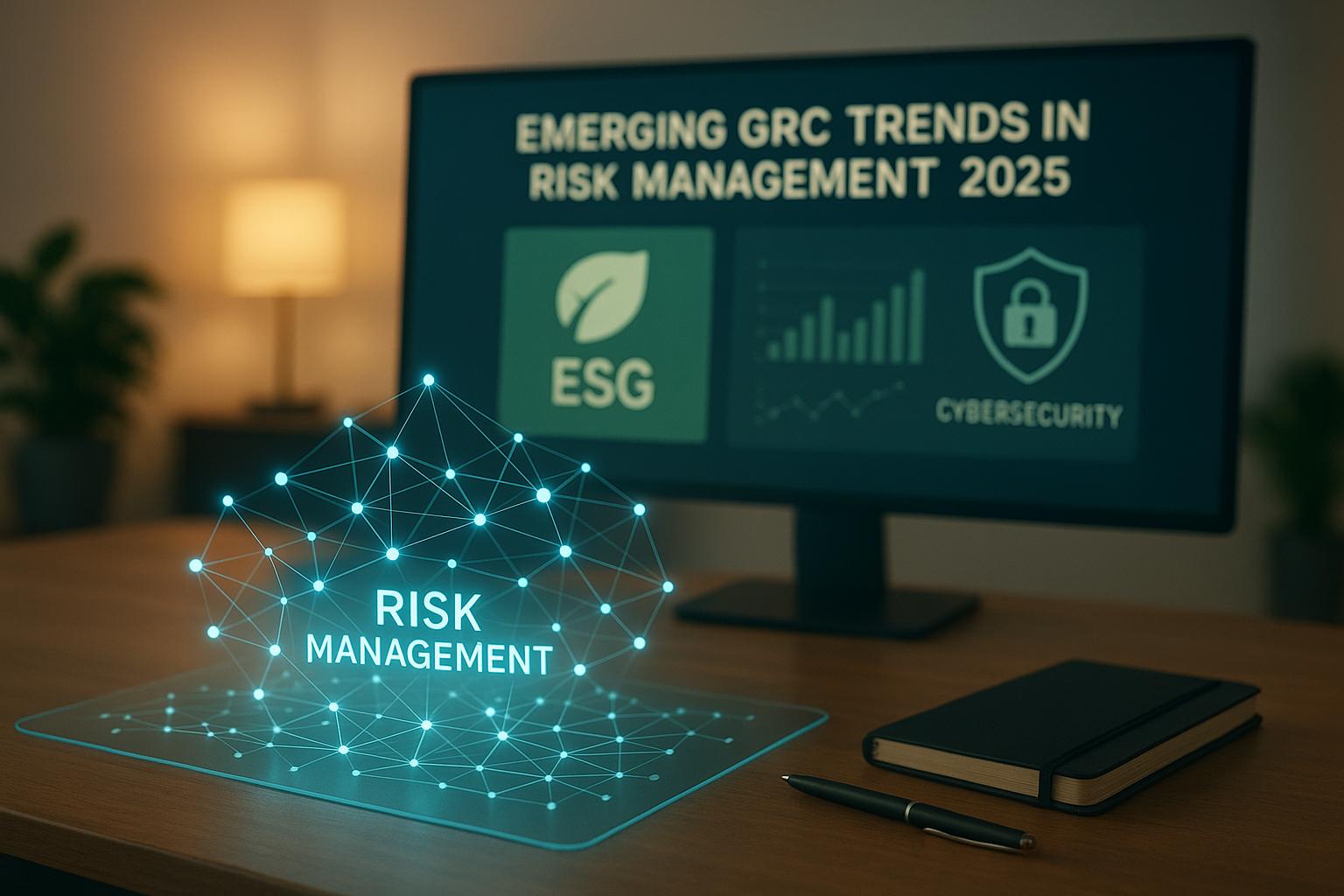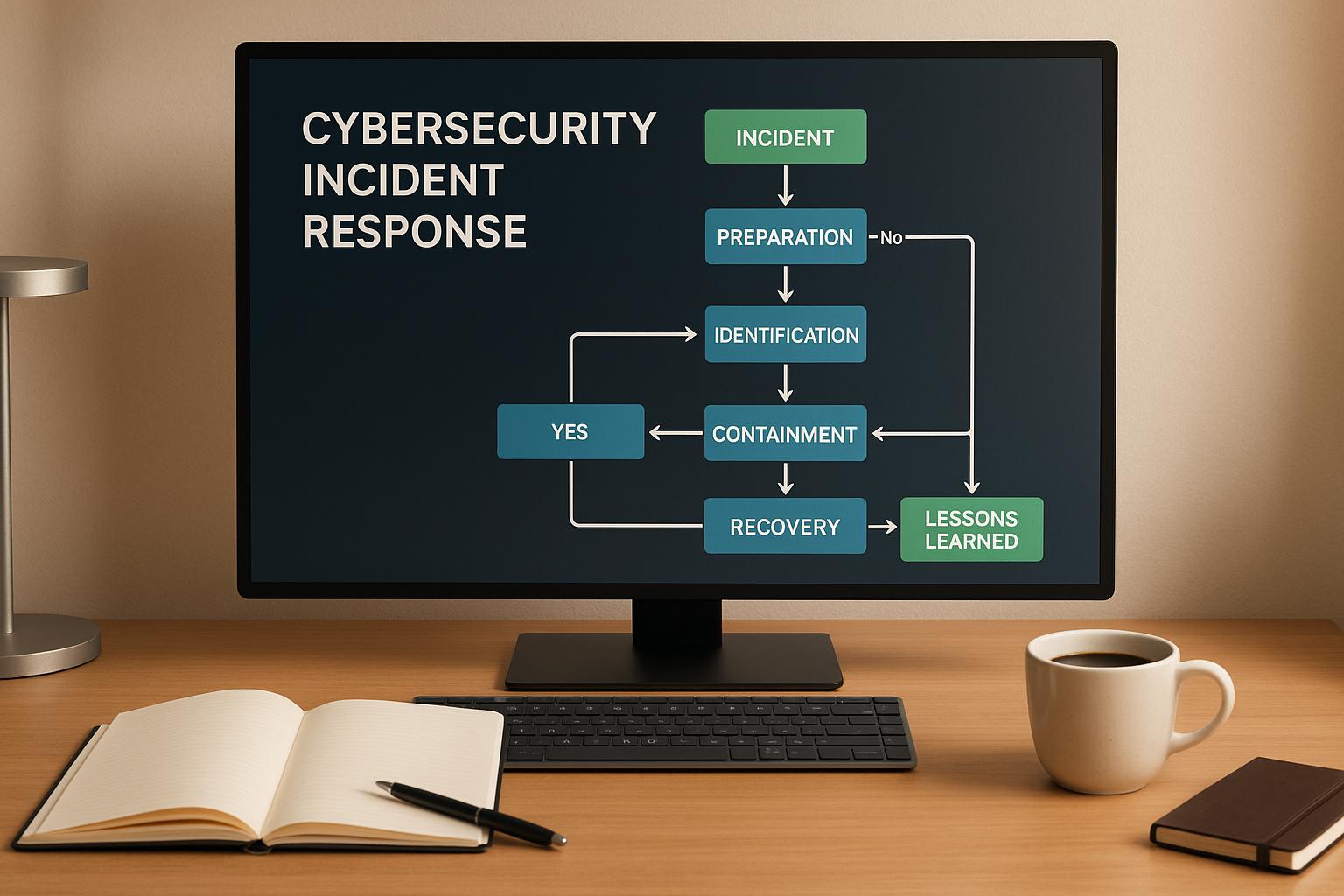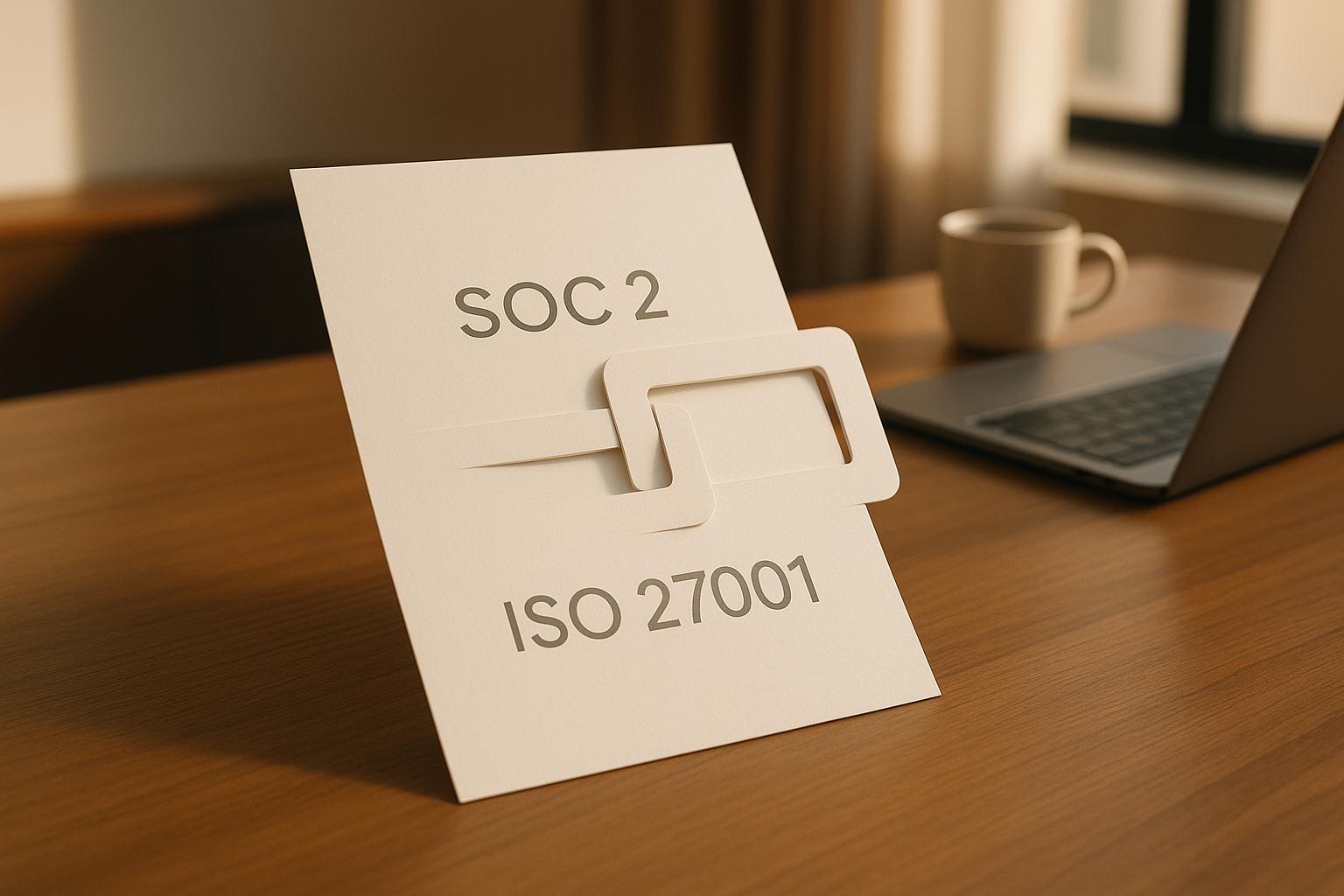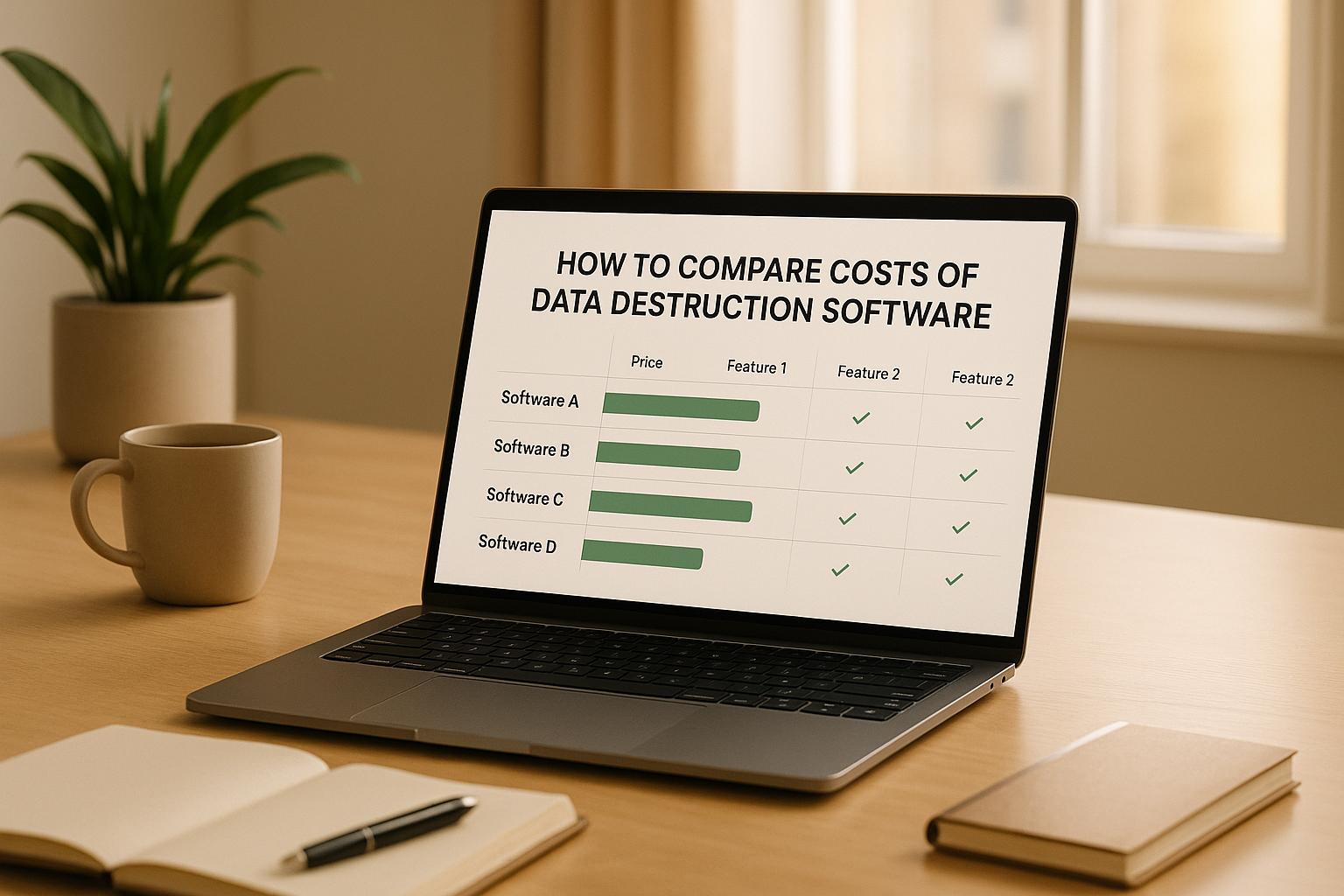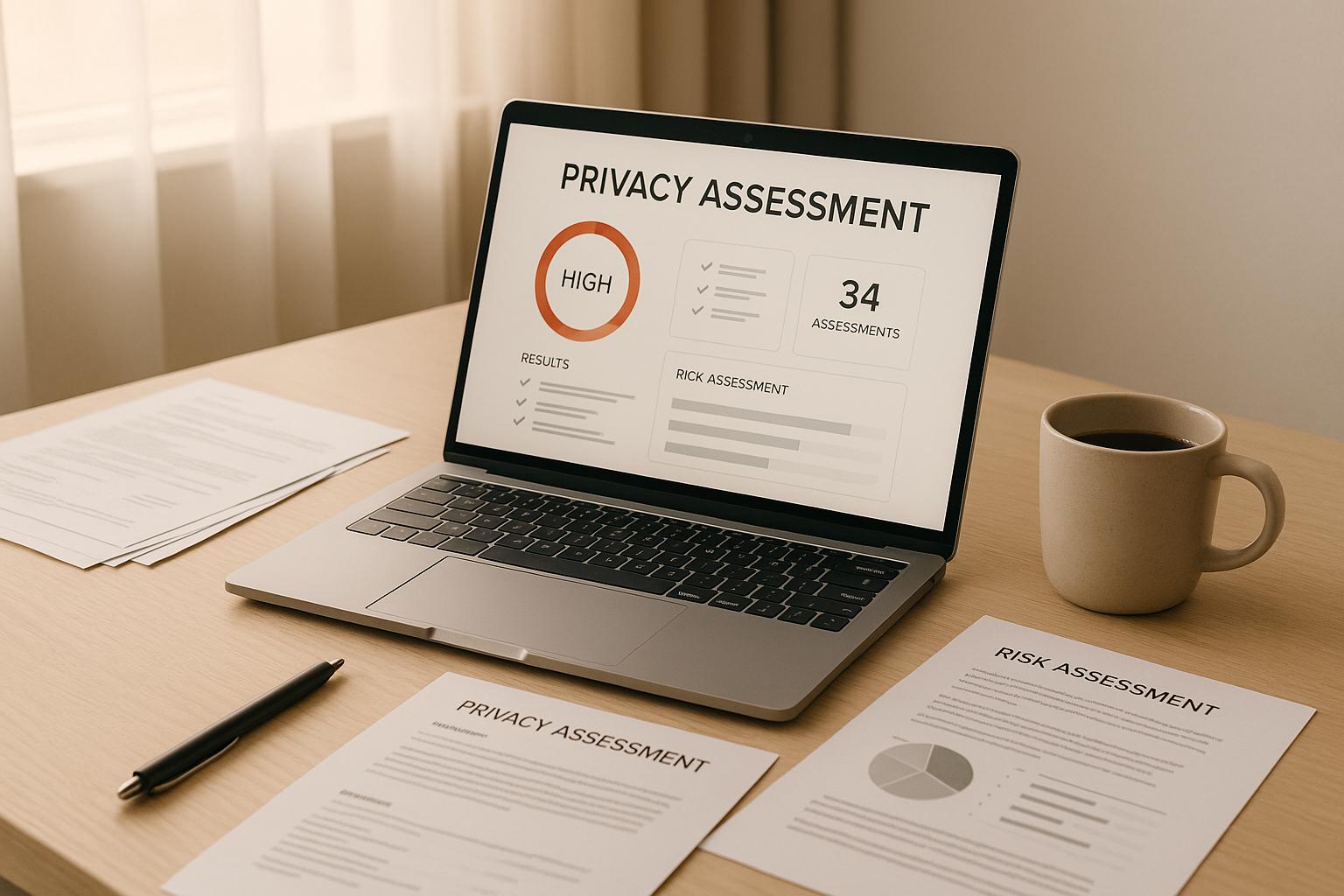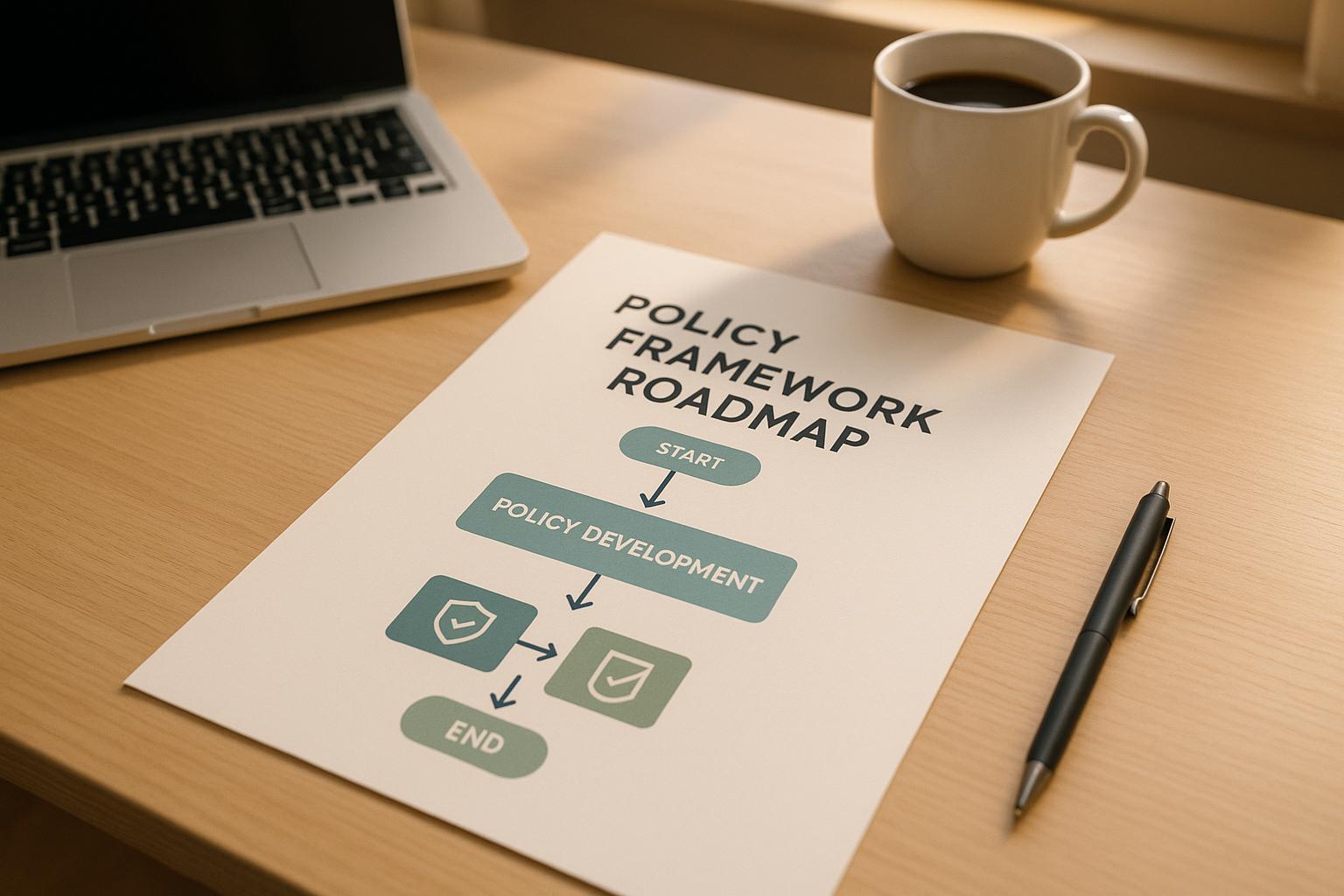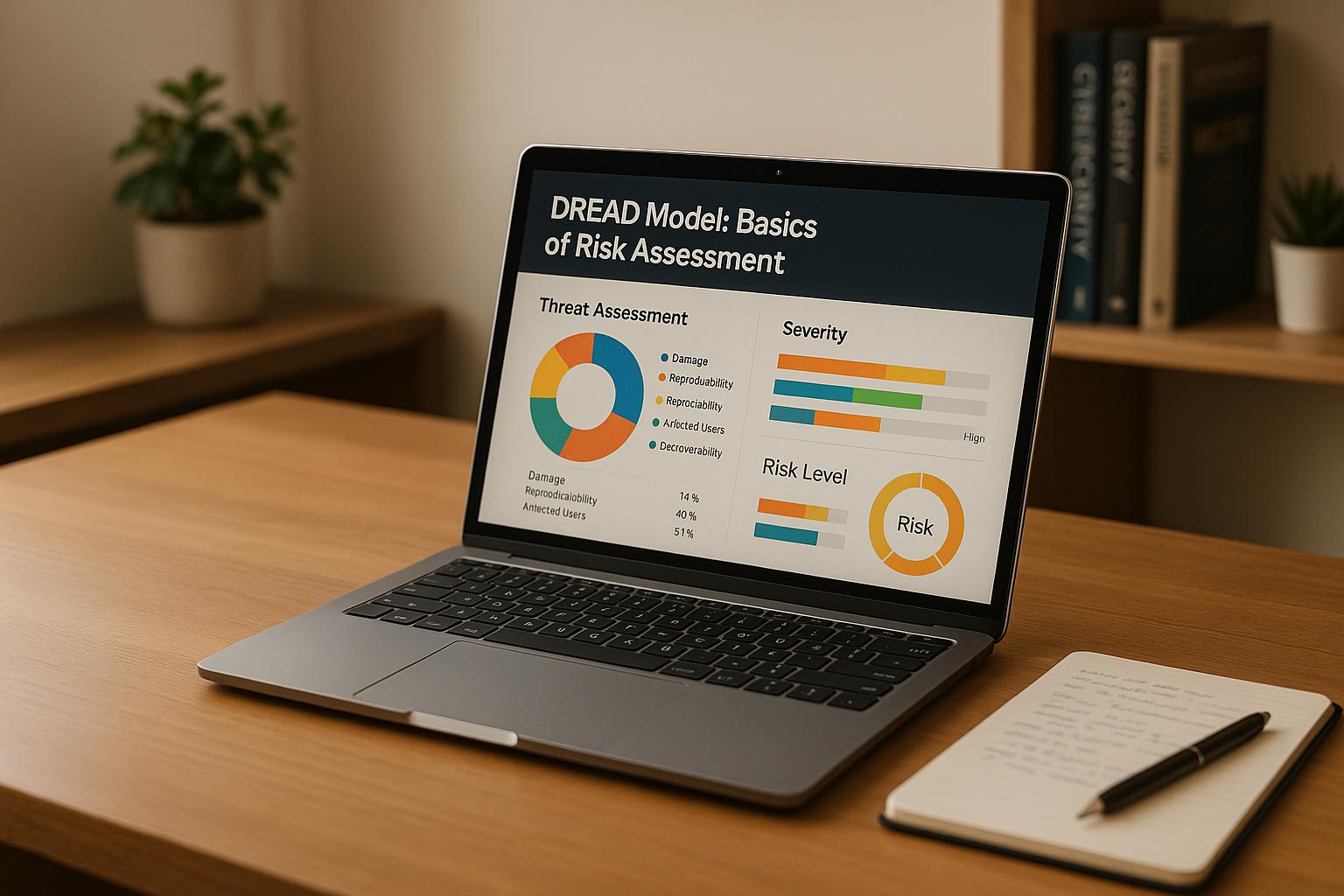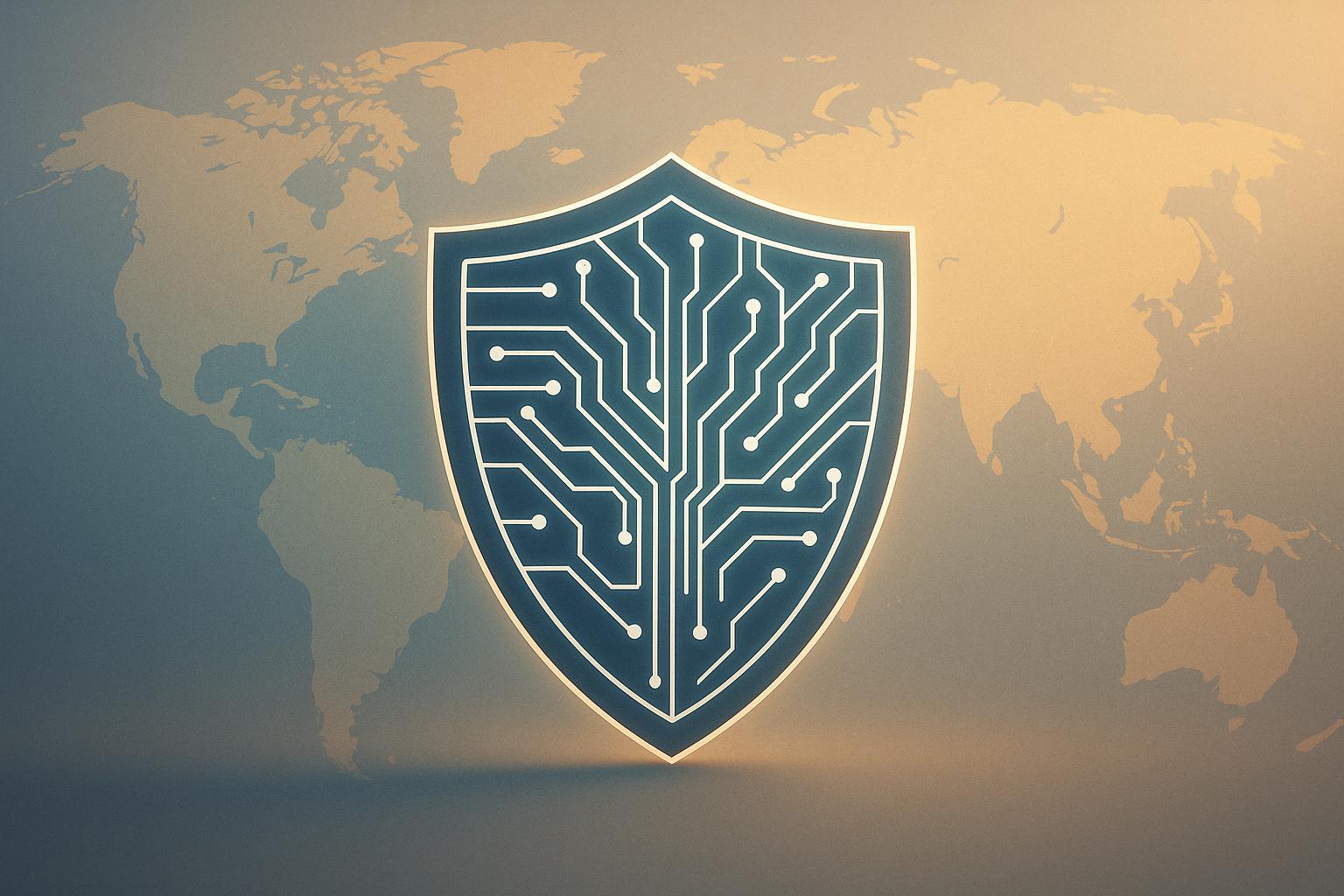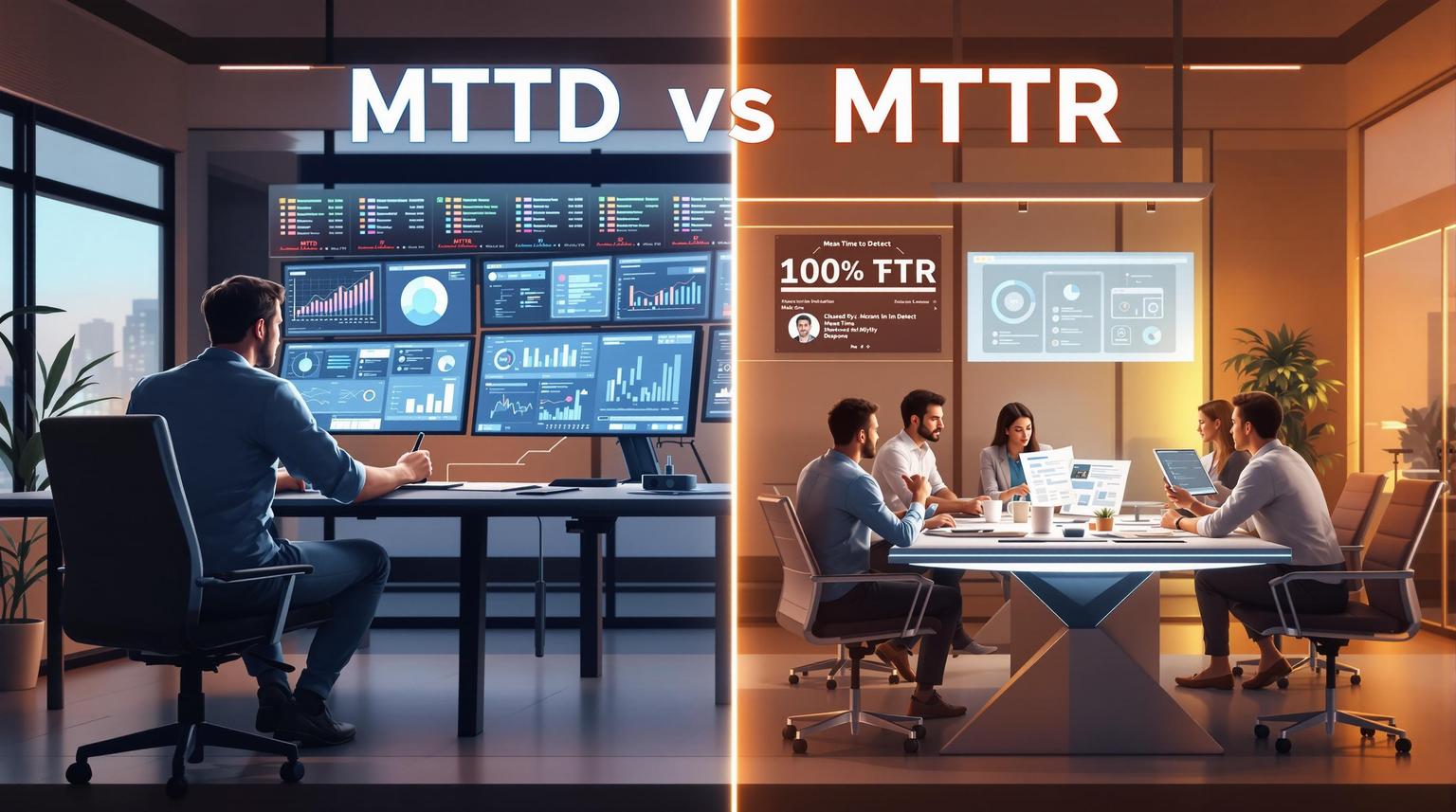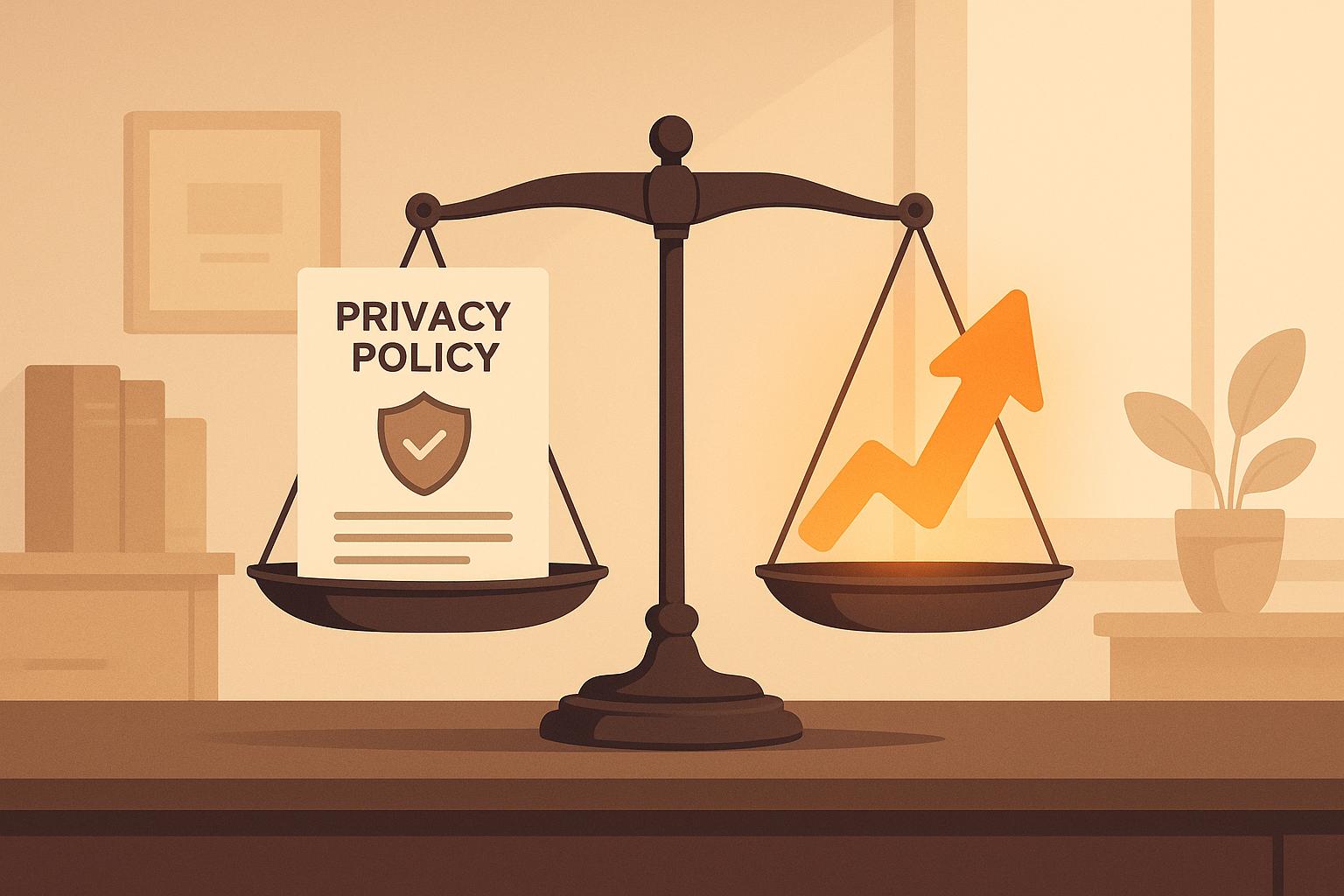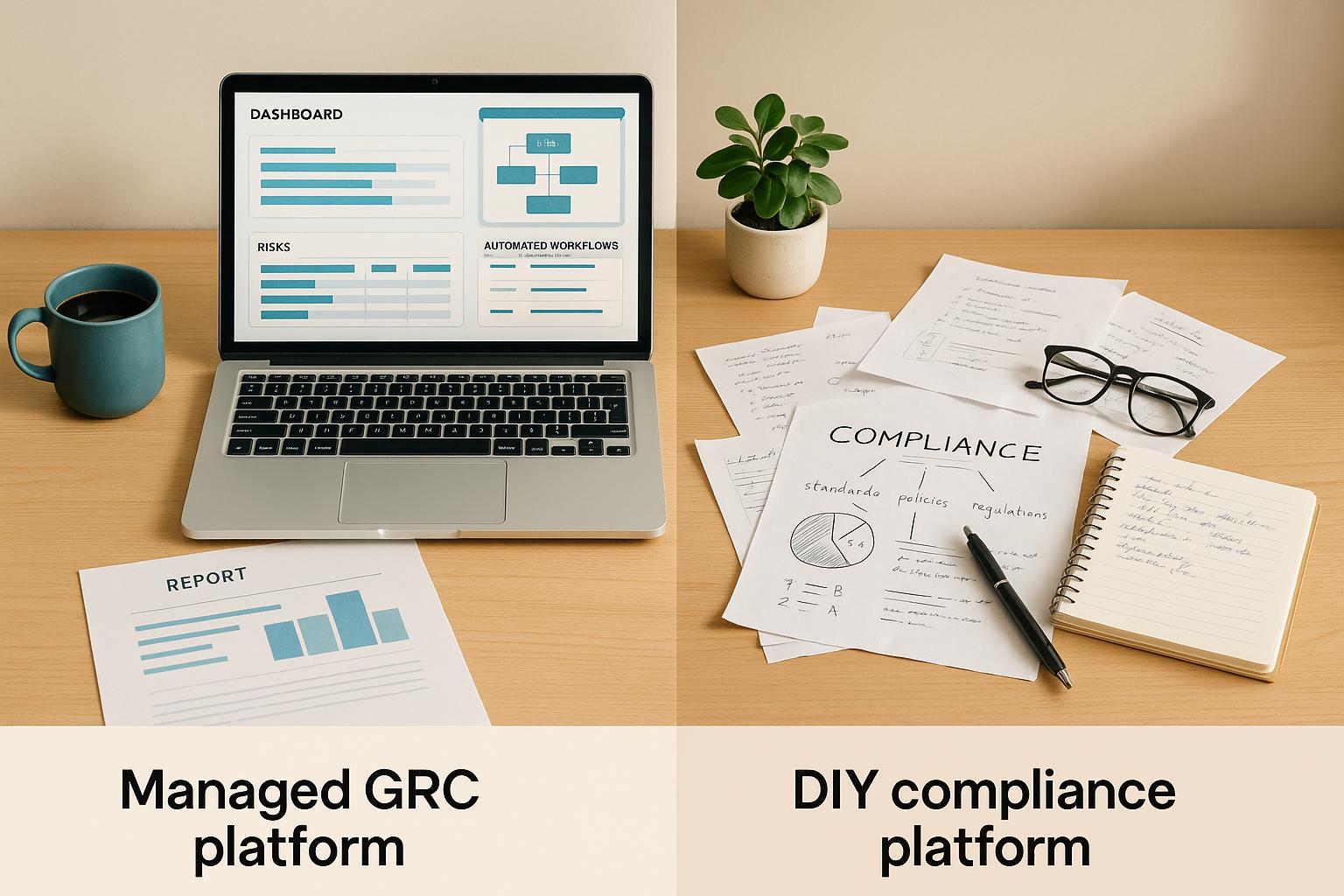
When deciding between managed GRC solutions and DIY platforms, the main question is whether you want to outsource compliance tasks or handle them in-house. Managed GRC solutions simplify compliance by bundling tools and expertise into a single subscription, reducing manual effort and staffing needs. DIY platforms, while offering more control, often come with hidden costs like training, staffing, and maintenance. Here's the breakdown:
- Managed GRC: Lower upfront costs, predictable subscription fees, and faster deployment. Ideal for companies with limited internal resources.
- DIY Platforms: Higher initial investment, ongoing operational expenses, and reliance on internal expertise. Better suited for organizations with in-house compliance teams.
Quick Comparison
| Criteria | Managed GRC | DIY Platforms |
|---|---|---|
| Upfront Costs | Lower (subscription-based) | Higher (implementation-heavy) |
| Ongoing Costs | Predictable | Variable (staffing, training, etc.) |
| Staffing Needs | Minimal | Significant |
| Automation | High | Moderate to High |
| Scalability | Built-in | Limited without extra investment |
| Time to Deploy | Faster | Slower |
Managed GRC solutions are often the better choice for small to mid-sized organizations aiming for efficient compliance without overburdening internal teams. DIY platforms may work for larger companies with sufficient resources to manage compliance internally.
What is GRC in Cybersecurity?
1. Cycore Secure
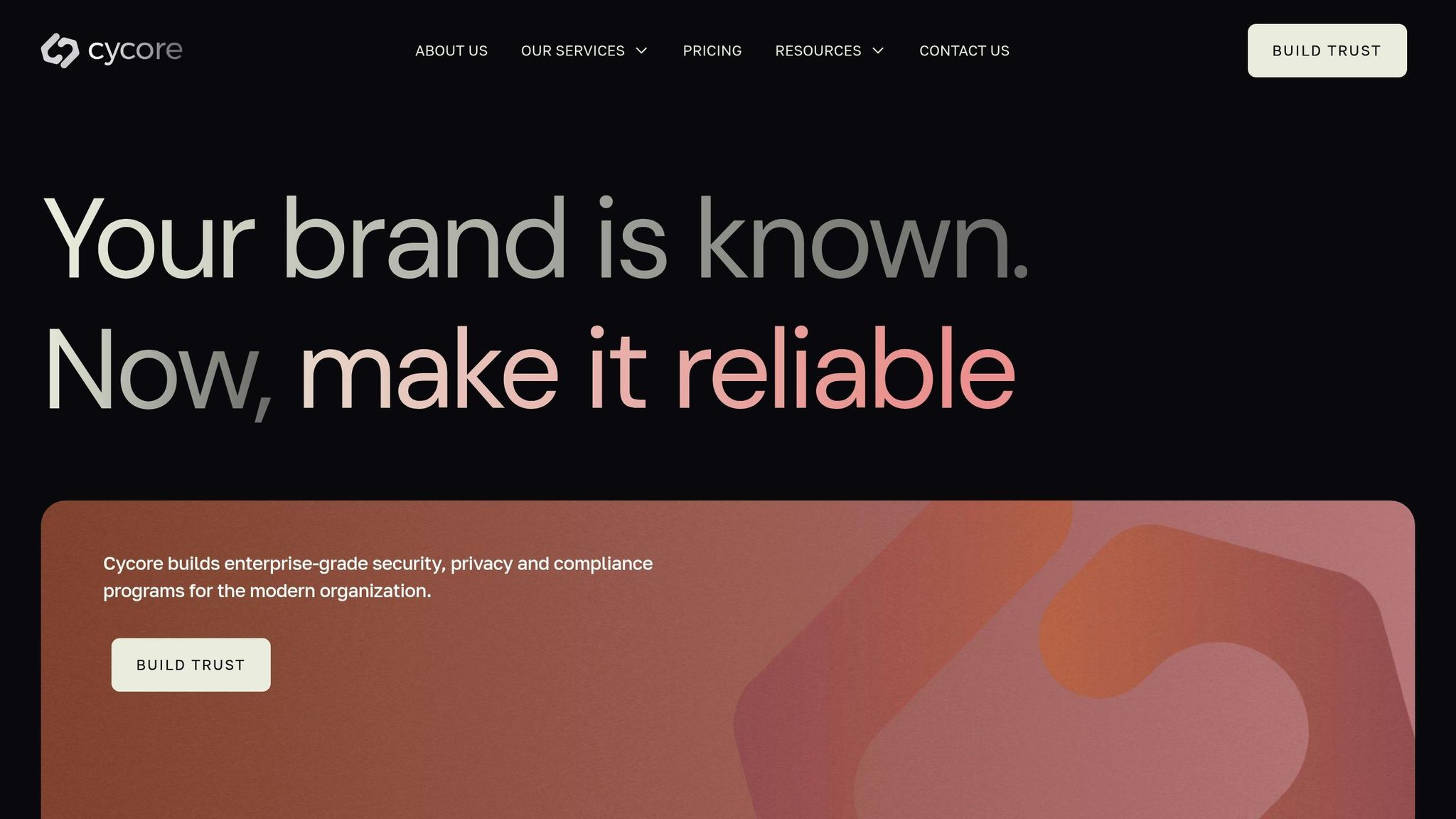
Cycore Secure offers managed GRC (Governance, Risk, and Compliance) services that help businesses avoid the hefty costs of building an in-house security team. Their approach revolves around providing virtual CISO (vCISO) and virtual DPO (vDPO) expertise through three pricing tiers tailored to meet the needs of organizations at different stages of growth.
The startup tier is designed for companies just starting their compliance journey. It includes vCISO services for one compliance framework, GRC software management, an initial compliance assessment, and monthly reporting. This tier is perfect for growing businesses that need compliance expertise without the expense of hiring a full-time executive.
For mid-market organizations, the service expands to support multiple compliance frameworks, advanced GRC management for up to two tools, annual penetration testing, and in-depth audit support. Meanwhile, the enterprise tier offers even greater scalability with custom GRC tool integrations for up to four platforms, quarterly penetration testing, and continuous vulnerability management. These tiered options allow businesses to access high-quality services at a fraction of the cost of managing everything internally.
"Outsourcing to Cycore Secure eliminates the need for a full-time, in-house security team, which can be costly. We offer comprehensive services at a fraction of the cost, providing you with expert support without the financial burden of full-time salaries and benefits."
Cycore Secure's upfront costs are far lower compared to do-it-yourself (DIY) implementations, which can range from $75,000 to over $500,000 depending on the project size. DIY options also often come with consulting fees of $20,000–$35,000 for implementations that can take 3–4 months. In contrast, Cycore includes implementation as part of its service, making it a more streamlined and cost-effective choice.
One of Cycore's standout benefits is its speed. They can deliver a SOC 2 strategy and playbook in just 20 days, whereas DIY approaches often take months of internal effort. This faster deployment helps businesses remove compliance barriers quickly, speeding up their sales cycles.
When it comes to ongoing costs, Cycore simplifies things by bundling everything - tools and expertise - into a single, predictable subscription fee. Traditional GRC solutions often require thousands of dollars annually, plus additional internal staffing costs. Cycore’s model eliminates these variable expenses, providing immediate access to seasoned security professionals without the hassle of recruitment or training.
"Cycore offers a cost-effective alternative by providing top-tier security and compliance services tailored to your needs. Without the overhead of full-time salaries, you gain access to a team of experts who manage your security posture and ensure compliance, allowing you to focus on innovation and growth. Our services are designed to scale with your business, giving you the flexibility to meet your security needs without compromising your budget."
Cycore's scalability is another major advantage. As companies grow, they can easily upgrade their service tier to access more tools and expanded capabilities. This flexibility ensures that businesses can maintain predictable costs while adapting their compliance strategies to support their growth.
2. Vanta
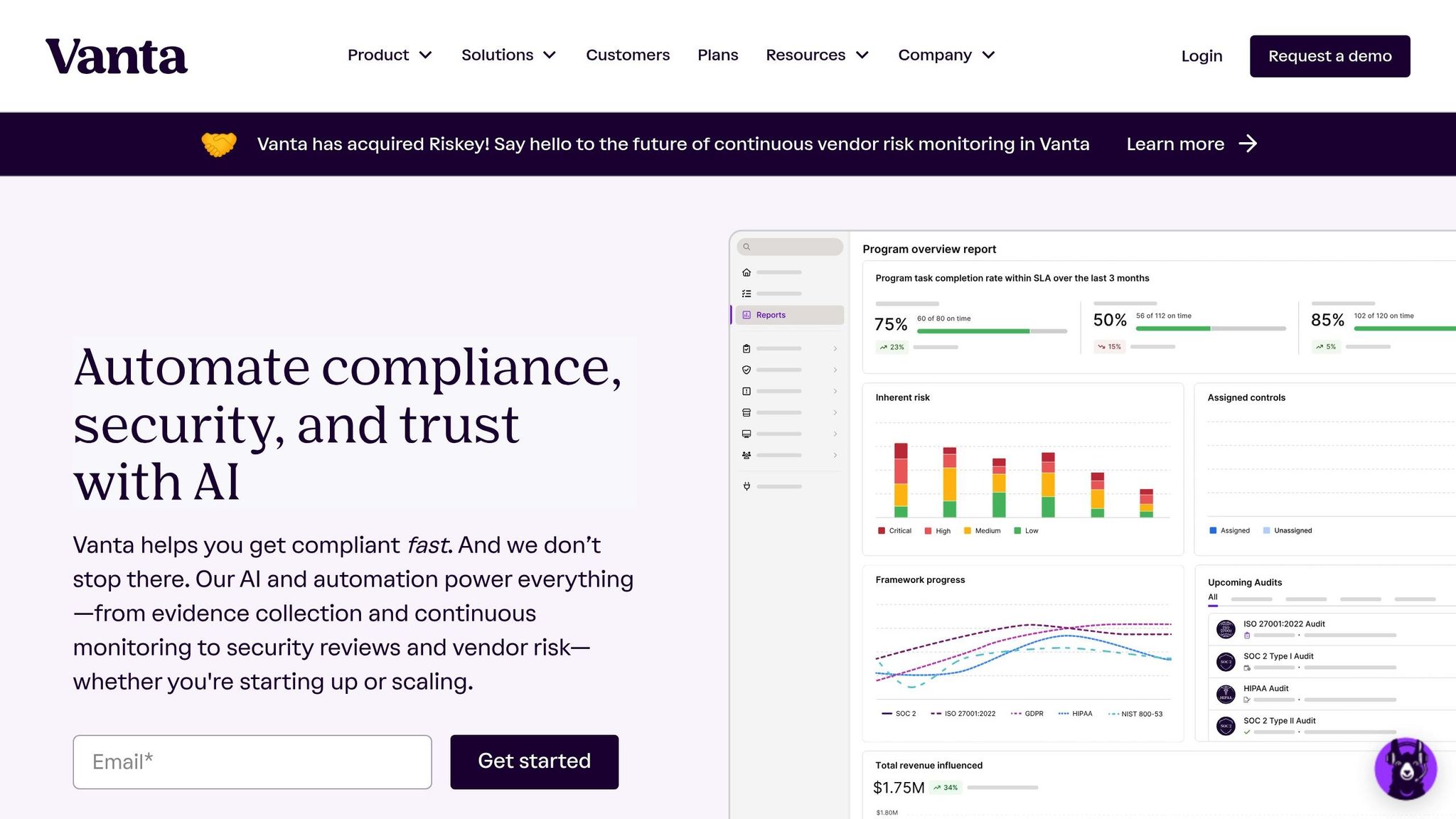
Vanta is a platform designed for do-it-yourself (DIY) governance, risk, and compliance (GRC) management. It automates many aspects of compliance, but its pricing and operational model can vary significantly depending on the size of the organization and its specific needs.
Upfront and Ongoing Costs
Vanta offers four pricing tiers - Core, Plus, Growth, and Scale - each tailored to different compliance demands. However, pricing details aren't fully transparent. Reports from Spendflo indicate that annual costs can range from $10,000 to $80,000, depending on factors like the number of devices, selected frameworks, and additional features. Vendr data shows that the median buyer spends $19,000 annually, with most falling between $6,143 and $49,000.
Costs can escalate quickly, with each added compliance framework increasing the annual price by $5,000. Advanced features, such as automated questionnaires or multi-workspace capabilities, also come at an extra cost. Implementation fees may apply, although these are often negotiable. Opting for multi-year agreements can sometimes reduce overall expenses. Unlike managed solutions, Vanta places the responsibility for compliance tasks - and their associated costs - squarely on the user.
Staffing Requirements and Operational Efficiency
Although Vanta is a DIY platform, it significantly reduces the manual workload involved in compliance efforts. The platform automates up to 90% of audit-related tasks, cutting down on time and effort.
"Vanta was a game-changer. Not only did it cut our audit time in half, it saved well over six figures and ultimately helped us build more trust with enterprise prospects."
- Danny Macias, VP of IT and Enterprise Security, Newfront
Vanta also integrates with over 375 tools, automating evidence collection and minimizing the need for dedicated compliance staff. Its AI-driven features provide remediation guidance and can answer security questionnaires with over 80% accuracy, achieving acceptance rates of up to 95%. While these capabilities reduce manual work, they require internal management, which adds a layer of responsibility for users.
Scalability and Compliance Expertise
Vanta supports compliance automation across more than 35 frameworks, including SOC 2, ISO 27001, and HIPAA. It caters to organizations of varying sizes, from startups to enterprises. The platform claims to deliver a 526% return on investment (ROI) over three years while improving team productivity by 129%. Additionally, it can complete compliance questionnaires up to 81% faster.
"Everything is in Vanta - automated tests, manual tests, policies, vendor security assessments, and more. This is wonderful as it helps us express our posture to external parties and communicate our program internally."
- Mandy Matthew, Lead Security Risk Program Manager, Duolingo
Despite its strengths, some users have raised concerns. Mickey v, a Financial Controller, called it a "Perfect compliance automation tool at a high price". Others have noted usability issues, such as a confusing interface, bugs, and delays in updating task statuses. Some users have also found the AI features lacking, citing overly verbose or inaccurate responses.
While Vanta's automation simplifies compliance, DIY usage requires in-house expertise, which can lead to hidden costs beyond the subscription fees.
3. Drata

Drata is a GRC automation platform designed to meet the needs of startups, mid-sized companies, and large enterprises. Like other platforms, it requires internal management and expertise, which can influence its overall cost and operational demands.
Upfront and Ongoing Costs
Drata’s pricing is based on a tiered model with plans suited for different organizational sizes and needs. The Essential Plan starts at $7,500 per year, targeting smaller organizations with basic compliance needs. The Foundational Plan is priced at $15,000 annually, aimed at medium-sized businesses requiring more advanced tools. For larger enterprises or those with complex compliance demands, the Advanced Plan offers custom pricing, typically ranging from $10,000 to over $50,000, with an average contract size of about $34,385 per year.
In addition to subscription costs, organizations need to account for audit expenses. SOC 2 Type 1 audits typically range from $7,500 to $20,000 for medium-sized companies, while SOC 2 Type 2 audits cost between $12,000 and $20,000. These costs highlight the importance of assessing both financial and resource commitments when considering Drata.
Staffing Requirements and Operational Efficiency
While Drata automates many compliance processes, it still requires internal oversight to function effectively. The platform’s automation capabilities can lead to significant time savings. For example, Calendly reported a 90% reduction in audit preparation time, and another organization noted that 98% of audit requests were ready before auditors even asked. Noah Martin, Co-Founder, emphasized the platform's value:
"Drata's level of automation gave us time savings. The sooner you work with Drata, the easier compliance will be as your company grows."
Drata offers over 500 pre-mapped controls and frameworks, automates evidence collection, and provides dashboards, alerts, and reports to streamline compliance management. Its compliance-as-code features also help identify and address security gaps while ensuring continuous monitoring, making the platform a strong tool for operational efficiency.
Scalability and Compliance Expertise
Drata supports multiple compliance frameworks, including SOC 2, ISO 27001, HIPAA, and GDPR, making it versatile for organizations with varied regulatory needs. Work completed for one framework can often be repurposed for others, minimizing additional effort. However, companies must ensure they have strong internal compliance expertise or invest in training to fill any skill gaps.
User experiences with Drata vary. Jorge A, Director of IT, shared:
"Drata has taken a complex, often burdensome process like SOC 2 compliance and made it manageable and clear. The continuous control monitoring gives our team real-time visibility into our compliance posture, which means we're not scrambling last minute or relying on guesswork. Integrations with our existing tools were smooth, and the platform's automation features cut down on time spent chasing documentation. Their support team has also been highly responsive and knowledgeable, which matters when you're dealing with audits and deadlines."
While many users praise Drata’s automation and support, some have pointed out areas for improvement, such as expanding integration options and refining the dashboard interface. Additionally, as organizations grow and require more robust security measures or additional compliance frameworks, the platform's costs can increase, making it important to factor in long-term scalability and total cost of ownership.
4. Secureframe
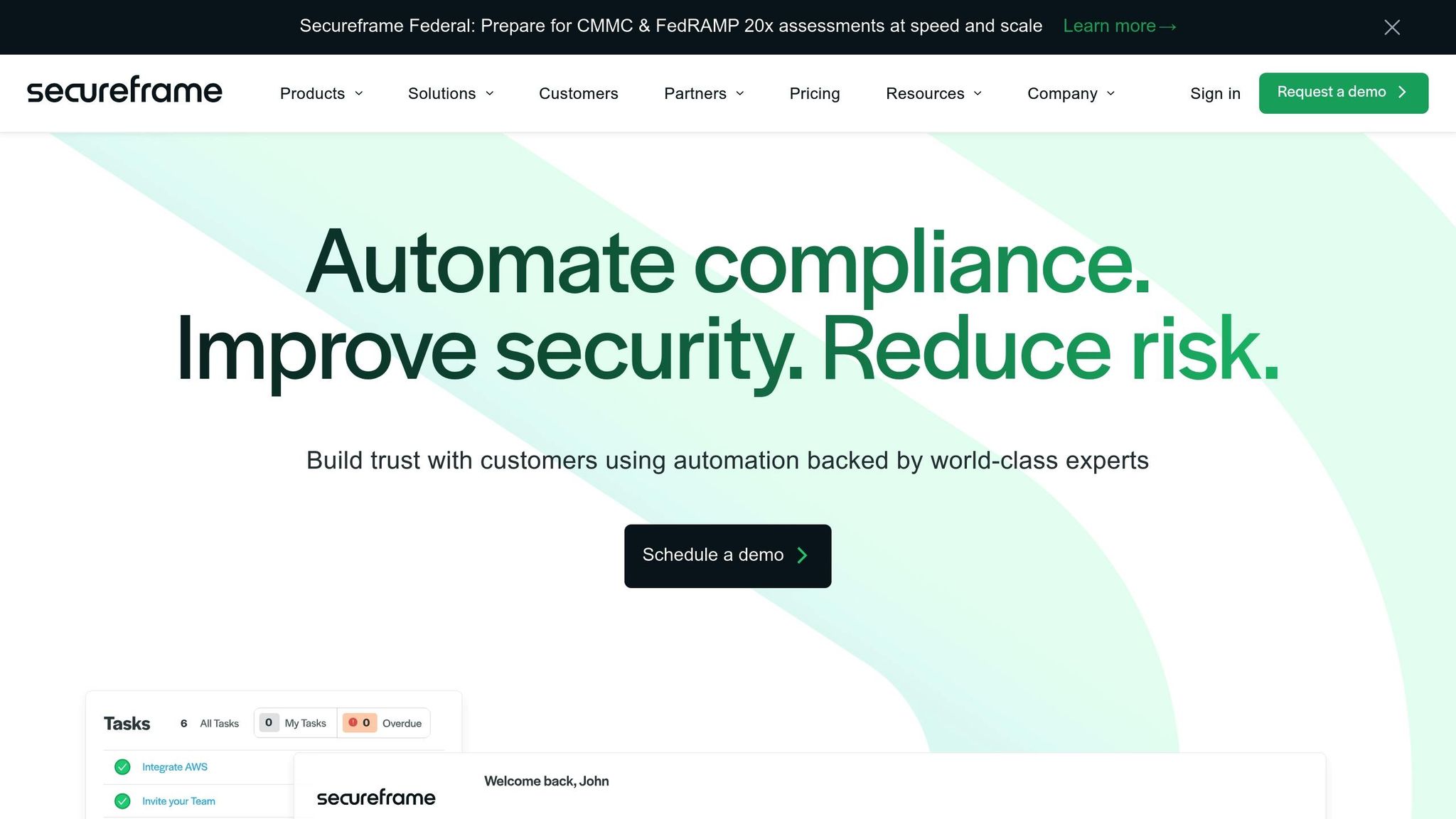
Secureframe is a do-it-yourself (DIY) Governance, Risk, and Compliance (GRC) platform that blends automated compliance tools with expert guidance from former auditors. While it requires internal oversight, it offers extensive automation to ease manual compliance tasks across multiple frameworks. For organizations looking for an efficient solution, it strikes a balance in total cost of ownership (TCO) compared to other options.
Upfront and Ongoing Costs
Secureframe’s pricing model includes two main components: platform access and framework activation. The platform access fee is $7,500 annually for up to 100 employees, with an additional $7,500 per year per compliance framework. For instance, starting with SOC 2 compliance would cost $15,000 annually, and the average deal size is approximately $20,500 per year. However, some users find the pricing structure complex and wish for more upfront clarity.
Audit costs are an additional consideration, varying based on the complexity of the framework and the size of the organization. Despite this, Secureframe customers report impressive efficiencies: 35% complete audits in less than half the usual time, and most see 25-50% savings on compliance costs compared to traditional methods. This pricing approach not only helps manage costs but also supports smoother operations.
Staffing Requirements and Operational Efficiency
Secureframe minimizes the need for additional staffing through its automation features, though internal oversight remains necessary. According to user feedback, 97% of customers report spending less time on security and compliance tasks, with 76% cutting their compliance workload by at least half. On average, automation saves users six hours per week.
The platform integrates with over 300 tools, including cloud platforms, identity providers, HR systems, and endpoint protection software. These integrations enable automated evidence collection and continuous monitoring, allowing 92% of businesses to redirect time and resources toward product development and customer engagement instead of manual security tasks.
Implementation requires coordination across teams such as IT/Security, HR/People Operations, and executive leadership. Most customers complete onboarding within 30 days with the help of a dedicated administrator. Having internal compliance expertise or leveraging Secureframe’s team of 30+ in-house compliance experts and former auditors can further streamline the process.
Scalability and Compliance Expertise
Secureframe is designed to scale across multiple compliance frameworks. For example, organizations that achieve SOC 2 compliance using the platform report being 93% complete with ISO 27001, 91% done with HIPAA, and 61% finished with PCI DSS requirements. This cross-framework efficiency significantly reduces the workload for organizations pursuing multiple certifications.
The platform also helps bridge compliance knowledge gaps. Alpine IQ CEO Nicholas Paschal shared his experience:
"Secureframe is probably one of our most valuable vendors. They act like a complete in-house security team... There isn't a better solution out there for achieving and maintaining compliance."
Secureframe’s continuous monitoring tools provide real-time insights into compliance status. However, some users note that automated tests can occasionally flag minor configuration changes that don’t affect compliance. Additionally, while the integration catalog is extensive, it doesn’t cover every tool, meaning some manual evidence collection may still be required for older systems.
The platform delivers strong return on investment (ROI), with the average customer seeing ROI in under six months and 85% of users achieving annual cost savings. For organizations with limited internal compliance expertise, Secureframe offers a balanced approach, combining automation with expert guidance. However, success depends on having dedicated internal resources to oversee the compliance program and factor the platform into broader TCO considerations.
sbb-itb-ec1727d
5. Thoropass
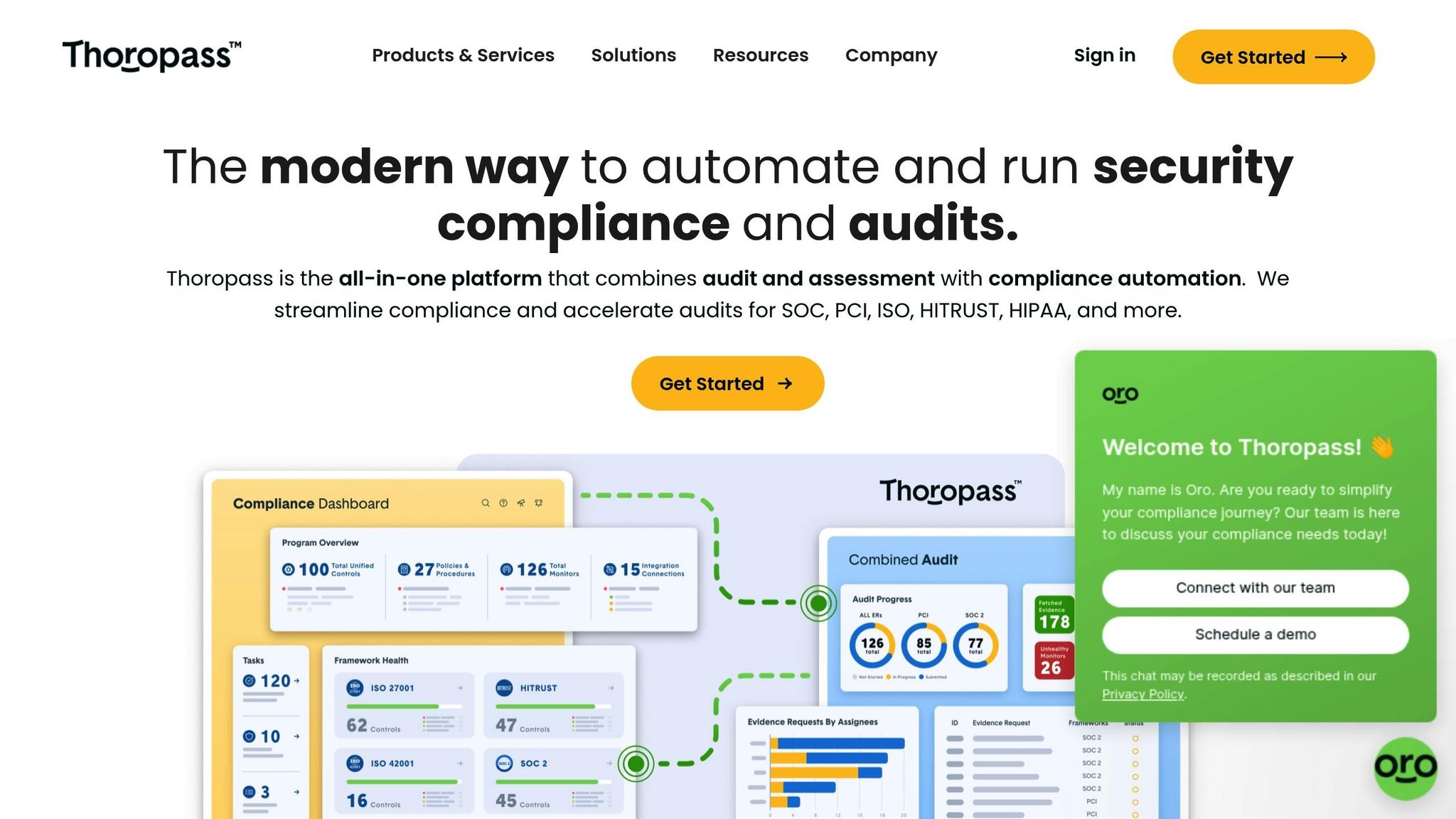
Thoropass stands out as a strong option for organizations with stringent regulatory requirements. This DIY GRC platform simplifies compliance management for industries like finance, healthcare, and technology, which often face heavy regulatory demands. By speeding up audits by as much as 67%, Thoropass offers a practical and efficient solution that balances cost and performance.
Upfront and Ongoing Costs
When it comes to pricing, Thoropass takes a subscription-based approach. The Compliance Platform starts at $8,700 annually, while the SOC 2 Audit costs $5,800, with total costs ranging between $7,000 and $25,000. This pricing is considerably lower than traditional solutions, which can cost between $20,000 and over $100,000 per year.
Additionally, Thoropass’s automated monitoring can cut compliance costs by up to two-thirds. Unlike enterprise GRC tools that often come with long-term contracts averaging $150,000–$180,000 over three years, Thoropass offers the flexibility of annual subscriptions, making it a more accessible choice for many businesses.
Staffing Requirements and Operational Efficiency
Thoropass reduces staffing needs and training expenses by leveraging AI-driven tools. Its real-time monitoring and alerts eliminate much of the manual oversight typically required. The platform’s AI scans compliance evidence, pinpoints gaps, and provides actionable feedback, reducing the need for dedicated compliance teams. Its intuitive interface also helps keep training time and costs minimal. Automated compliance reviews further lighten the workload, allowing teams to focus on other priorities.
"Thoropass's solution doesn't sleep so that you can. We continue to collect evidence, maintain controls, and monitor your systems to reduce risk."
Scalability and Compliance Expertise
Thoropass is built to scale, offering support for a variety of frameworks and certifications. Its ability to conduct audits 67% faster adds value for organizations pursuing multiple certifications. Features like automated evidence collection and continuous monitoring enable the platform to grow with a business’s needs without requiring additional staff or resources.
For instance, the FinTech company Capitalize achieved SOC 2 compliance in just two weeks using Thoropass on AWS. The platform’s seamless onboarding process and expert gap analysis helped Capitalize quickly meet compliance requirements. By integrating with AWS tools like Amazon GuardDuty, Amazon CloudWatch, and AWS CloudTrail, Thoropass not only reduced costs but also accelerated the compliance process.
Chris Phillips, CTO of Capitalize, praised the platform’s efficiency:
"With Thoropass' seamless audit experience, we were able to get the audit done in a fraction of the time it took when I was working with bigger institutions."
While some users have mentioned the need to stay updated on the platform’s continuous improvements, Thoropass’s combination of automation, expert guidance, and streamlined workflows makes it a cost-effective choice for organizations aiming to lower their compliance costs while maintaining strong security measures.
6. DIY GRC Platforms Overview
DIY GRC platforms offer the flexibility to tailor compliance solutions to specific needs, but they come with a host of hidden costs that can add up quickly. These expenses differ significantly from the more predictable pricing structures of managed solutions.
Upfront Investment Requirements
Launching a DIY GRC platform often requires a hefty initial investment. For smaller deployments, costs typically range from $75,000 to $150,000, while enterprise-level implementations can start at $250,000 and soar past $500,000. Traditional legacy GRC systems tend to be even pricier, with enterprise platforms averaging $150,000 to $180,000 over three years and exceeding $500,000 for five-year implementations. Many DIY solutions operate on perpetual licensing models, demanding a significant upfront capital outlay compared to the subscription-based pricing of managed alternatives.
Additionally, on-premise deployments can involve substantial hardware-related costs. Companies must budget for servers, security infrastructure, backup systems, and any required integrations, which may necessitate custom APIs or developer resources to address compatibility issues.
Hidden Ongoing Expenses
The true financial burden of DIY GRC platforms becomes evident over time, as operational expenses pile up. Training alone can cost anywhere from $250 to over $12,000, depending on the depth and certification requirements. Many GRC training programs range from $1.50 to $2.50 per employee per month, translating to $18–$30 per employee annually.
Customization is another expense that organizations often underestimate. For example, a healthcare provider may need to create custom workflows to comply with HIPAA regulations, going beyond the standard templates the platform offers. Similarly, financial services firms might find that generic training programs don’t address their specific needs, requiring additional investment in specialized training for their teams.
Operational demands also strain resources, further increasing costs over time.
Staffing and Operational Challenges
DIY platforms require a significant commitment of internal resources for day-to-day operations and maintenance. Many organizations grapple with manual processes that are not only time-consuming but also prone to errors. Reliance on spreadsheets and inconsistent tracking methods can create bottlenecks, hindering reporting and decision-making.
These inefficiencies can lead to staff frustration and even turnover, especially when teams are bogged down by cumbersome workflows. Additionally, the manual upkeep of policies increases the risk of outdated or non-compliant practices, further complicating operations.
Scalability Limitations
As organizations grow, DIY platforms often struggle to scale effectively. For instance, a tech startup might start with a basic subscription plan, only to outgrow it as compliance demands increase, leading to higher annual costs when upgrading. Keeping up with changing regulations, rising risks, and expanding operations can overwhelm systems that lack scalability. Siloed operations, where departments work independently, exacerbate these issues by limiting communication and creating redundant efforts. These challenges stand in contrast to managed solutions, which are designed to scale seamlessly with organizational growth.
Long-Term Financial Impact
While DIY solutions might seem cost-effective at first glance, their long-term financial impact can be substantial. Consider a global bank using an on-premise GRC system: they must account for annual maintenance fees for updates and security patches - expenses that are crucial for staying compliant with regulations. Combined with the need for dedicated IT support and compliance expertise, these ongoing costs can drive the total cost of ownership far beyond initial estimates.
Beyond direct expenses, inefficiencies and compliance gaps can lead to higher operational costs. The inability to generate accurate and timely reports can also hinder decision-making and strategic planning.
"The cost of non-compliance is not just about fines and penalties; it's about the damage to your brand, the loss of trust from your customers, and the impact on your ability to do business." - Sheila C. Bair, Former Chair of the Federal Deposit Insurance Corporation (FDIC)
Despite these challenges, 73% of organizations plan to increase their investment in GRC technologies over the next three years. This underscores the growing recognition of the importance of a reliable compliance framework, even with the complexities DIY platforms present.
Advantages and Disadvantages
When comparing the total cost of ownership (TCO) between managed GRC solutions and DIY platforms, organizations need to consider more than just subscription fees. Each approach comes with its own set of benefits and challenges, which can significantly impact both financial and operational outcomes over time. Let’s dive into the details of managed solutions versus DIY platforms.
Managed GRC Solutions: The Streamlined Approach
Managed GRC solutions stand out for their efficiency and ability to centralize tasks. As Neepa Patel puts it:
"A streamlined GRC system eliminates the need for disparate tools and spreadsheets. By centralizing governance, risk management, and compliance tasks into a unified platform, GRC software saves time and resources, increasing organizational efficiency".
This centralized approach reduces the need for specialized staff, making it especially appealing to organizations with limited resources. Automation and streamlined processes further enhance efficiency.
Scalability is another major advantage. These solutions are built to grow alongside an organization’s needs. Jessica Parant, Compliance Specialist at Pythian, shared her experience:
"As our company continued to expand and grow, we needed a GRC platform that was going to grow with us and not feel limited by the functionalities that we had here in place".
However, the convenience of managed solutions comes with recurring subscription fees, which can accumulate over time.
DIY Platforms: The Custom-Built Alternative
DIY platforms offer complete control over compliance frameworks, allowing organizations to tailor systems to their specific needs. This level of customization can be appealing for those who want full authority over their system architecture and data management.
The initial costs of DIY platforms may seem attractive, with modern GRC solutions ranging from $7,000 to $25,000, compared to legacy systems that can exceed $500,000 for extensive implementations. However, the operational realities tell a different story. DIY platforms often rely on manual processes, which increase the risk of errors and inefficiencies. They also demand significant IT support, compliance expertise, and ongoing maintenance.
Scalability is another hurdle. As organizations grow, DIY systems can struggle to keep up. A 2023 survey found that only 53% of organizations managing their own risk and compliance strategies considered their programs mature, highlighting the challenges of building and maintaining effective systems in-house.
Side-by-Side Comparison
| Factor | Managed GRC Solutions | DIY Platforms |
|---|---|---|
| Upfront Costs | Lower subscription-based pricing | Higher development and integration costs |
| Ongoing Costs | Predictable monthly/annual fees | Variable maintenance and training costs |
| Staffing Needs | Minimal specialized staff required | Significant IT and compliance personnel needed |
| Operational Efficiency | Automated workflows and centralized processes | Manual processes with higher error risks |
| Scalability | Built-in scalability with vendor support | Limited scalability requiring extra investment |
| Compliance Expertise | Built-in regulatory updates and knowledge | Requires internal expertise development |
The Overlooked Expenses
Hidden costs often tip the scales when evaluating TCO. For DIY platforms, these include training costs ranging from $250 to $12,000 per implementation and consulting fees of $20,000 to $35,000 for setup. These expenses can quickly drive up the total investment. Mike Caldwell, Senior Program Manager for GRC at Outreach, highlighted the value of managed solutions:
"With our GRC platform, we can immediately understand our compliance posture because it provides a single source of truth on controls that is more reliable than Google sheets".
Key Strategic Considerations
Beyond the numbers, strategic factors play a vital role in the decision-making process. Organizations with limited resources should look for platforms that prioritize automation, ease of use, and scalability. The growing demand for managed solutions is evident in the eGRC market, which is projected to grow from $18.3 billion in 2024 to $34.5 billion by 2029.
The stakes are high - data breaches in the U.S. cost an average of $9.44 million. Managed solutions, with their built-in compliance expertise and automated monitoring, can help prevent incidents that far outweigh their subscription fees.
Ultimately, the choice between managed GRC solutions and DIY platforms depends on an organization’s unique needs and resources. That said, the predictable costs, operational efficiency, and scalability of managed solutions make them an increasingly popular choice for many.
Conclusion
When weighing managed GRC solutions against DIY platforms, the decision often comes down to balancing predictable costs with the resources at hand. While DIY options might appear budget-friendly at first glance, hidden costs - such as consulting fees and training expenses - can quickly add up, increasing the total cost of ownership.
For U.S.-based organizations with limited resources, managed GRC solutions provide a more predictable financial model through subscription-based pricing. These solutions often include built-in automation, which can significantly lower compliance costs - sometimes by over 50% - by simplifying processes like evidence collection.
Looking at the bigger picture of total cost of ownership, mid-sized companies can see notable savings. Labor costs might drop by 20–30%, risk assessment expenses could decrease by 40%, and annual costs could be reduced by approximately $50,000. In many cases, these savings can offset the subscription fees within the first year.
The choice of vendor also depends on your specific compliance needs. Companies working across multiple frameworks, such as SOC 2, HIPAA, and ISO 27001, often benefit from managed solutions that include built-in regulatory expertise and automatic updates. As Anthony Stevens, CEO and Founder of 6clicks, advises:
"Choose the right vendor with transparency and diligence, for in partnership lies the foundation of a resilient and thriving GRC strategy".
Another critical factor is resource availability. DIY platforms demand significant IT support, compliance know-how, and ongoing maintenance - resources that smaller organizations may not have. Moreover, the GRC market’s projected growth - from $38 billion in 2020 to an estimated $60.5 billion by 2025 - highlights the increasing importance of investing in managed solutions for long-term value.
To make an informed decision, organizations must thoroughly evaluate current processes, set clear goals for their GRC program, and account for all costs, including productivity losses and training expenses.
Ultimately, managed GRC solutions stand out for their predictable pricing, operational efficiency, and scalability. These benefits make them an appealing choice for U.S.-based organizations aiming for sustainable compliance strategies while avoiding the hidden challenges of DIY approaches. With the right insights, companies can align their compliance strategies with both their budgets and operational goals.
FAQs
What hidden costs should organizations consider when using DIY GRC platforms?
DIY GRC platforms might seem like a cost-effective solution at first glance, but they often come with hidden expenses that can strain both your budget and operations. For starters, the software itself can carry hefty upfront costs, typically ranging from $5,000 to $30,000. Beyond that, many of these systems are either overly complex or poorly designed, leading to inefficiencies that eat up valuable time and resources.
Another major factor is staffing. Managing the manual processes that often accompany DIY GRC tools may require hiring additional personnel, further driving up costs. On top of these challenges, organizations risk compliance failures due to disorganized workflows and fragmented data. These missteps can result in steep penalties or even harm your reputation. When you add up these indirect costs, the initial savings of a DIY approach can quickly disappear, making it crucial to assess whether this route truly meets your organization's needs and capabilities.
How do managed GRC solutions scale compared to DIY compliance platforms?
Managed GRC solutions are designed to grow alongside your organization, effortlessly accommodating expanding compliance requirements, larger datasets, and more users - all without a heavy lift. On the other hand, DIY platforms often hit roadblocks when scaling, demanding significant time and resources to keep up with increasing demands.
With a managed solution, businesses can expand their compliance efforts smoothly while staying efficient and keeping costs under control. It’s a smart way to save time and resources as your needs evolve.
What should companies consider when choosing between a managed GRC solution and a DIY compliance platform?
When weighing a managed GRC solution against a DIY compliance platform, companies need to take a close look at factors like their size, industry requirements, risk exposure, and the resources they have in-house. Managed solutions can take a lot off your plate by offering expert guidance, easing workloads, and simplifying compliance workflows. On the flip side, DIY platforms might appeal to organizations with strong internal expertise, offering more control and potential cost savings.
Another critical consideration is the total cost of ownership (TCO). This includes not just upfront costs but also ongoing expenses like maintenance, staffing, and operational efficiency. For smaller teams or businesses without much compliance experience, managed solutions can save time and reduce headaches. But if your organization has a capable internal team, DIY platforms could provide the flexibility and budget alignment you're looking for. The key is to carefully evaluate your specific needs, resources, and long-term objectives to choose the right approach.


